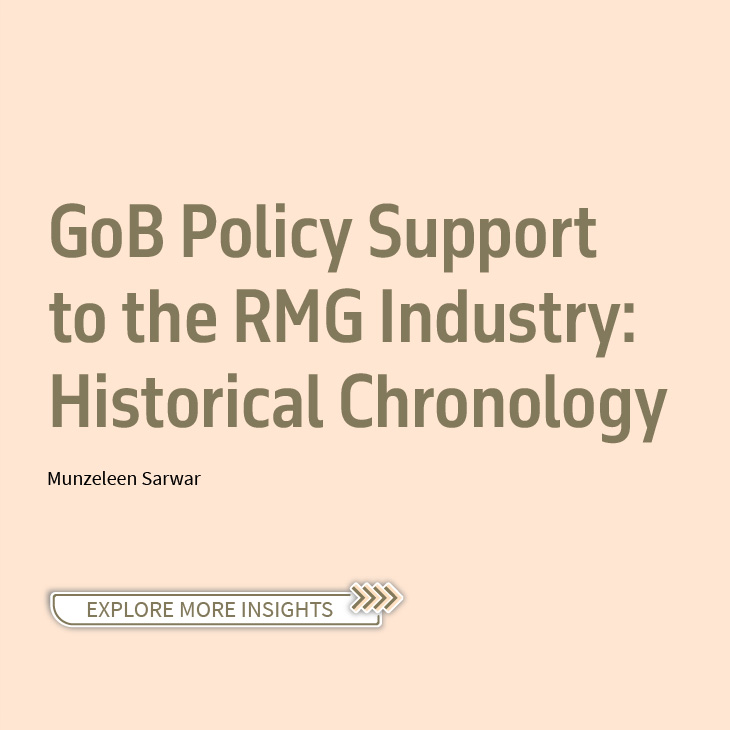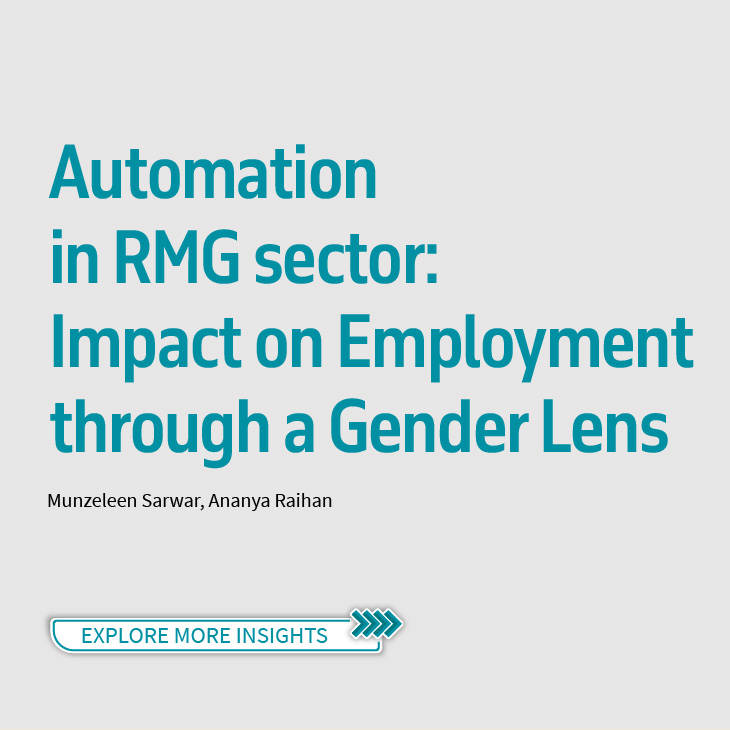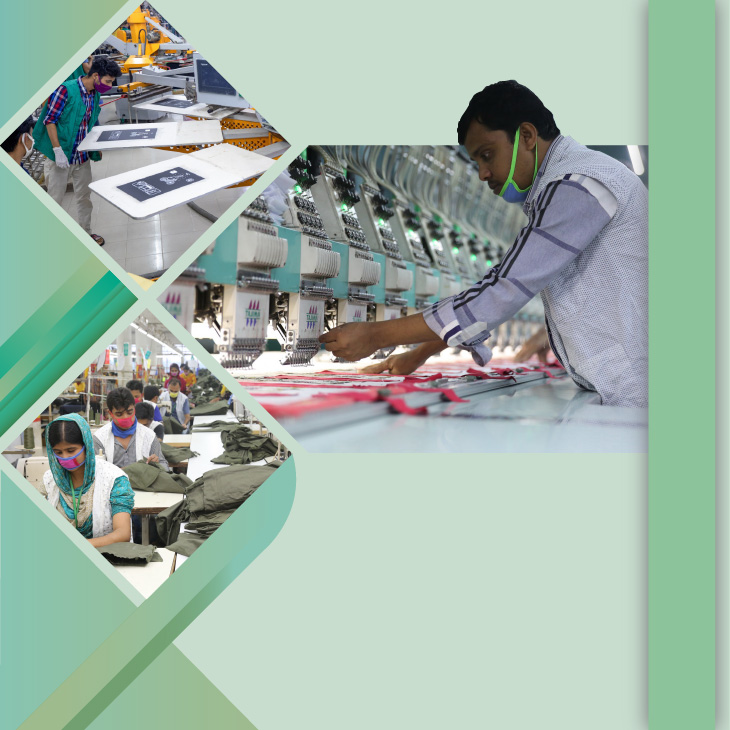Weaving the Future of
Bangladesh’s Apparel
For the fourth issue of Economic Intelligence Bangladesh, The Business Standard in collaboration with DataSense conducted a survey of the leaders of the readymade garments (RMG) sector to assess Bangladeshi enterprises’ readiness for toughened global competition after the LDC graduation expected in November 2026.
Carried out in June 2024, the survey brings together the perspective of 20 leading RMG Enterprises collectively employing around 250,000 workers, about half of which are female.
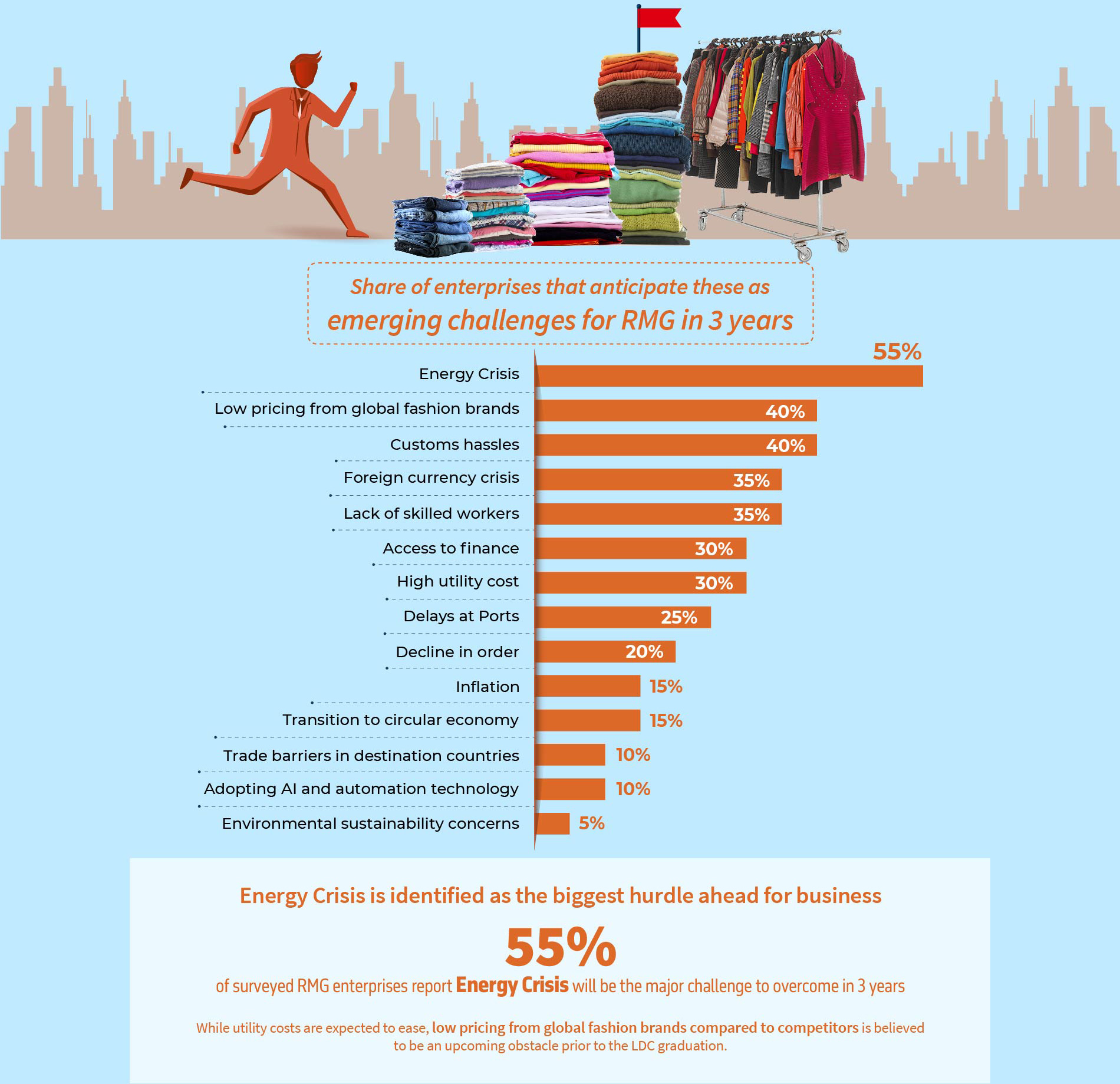
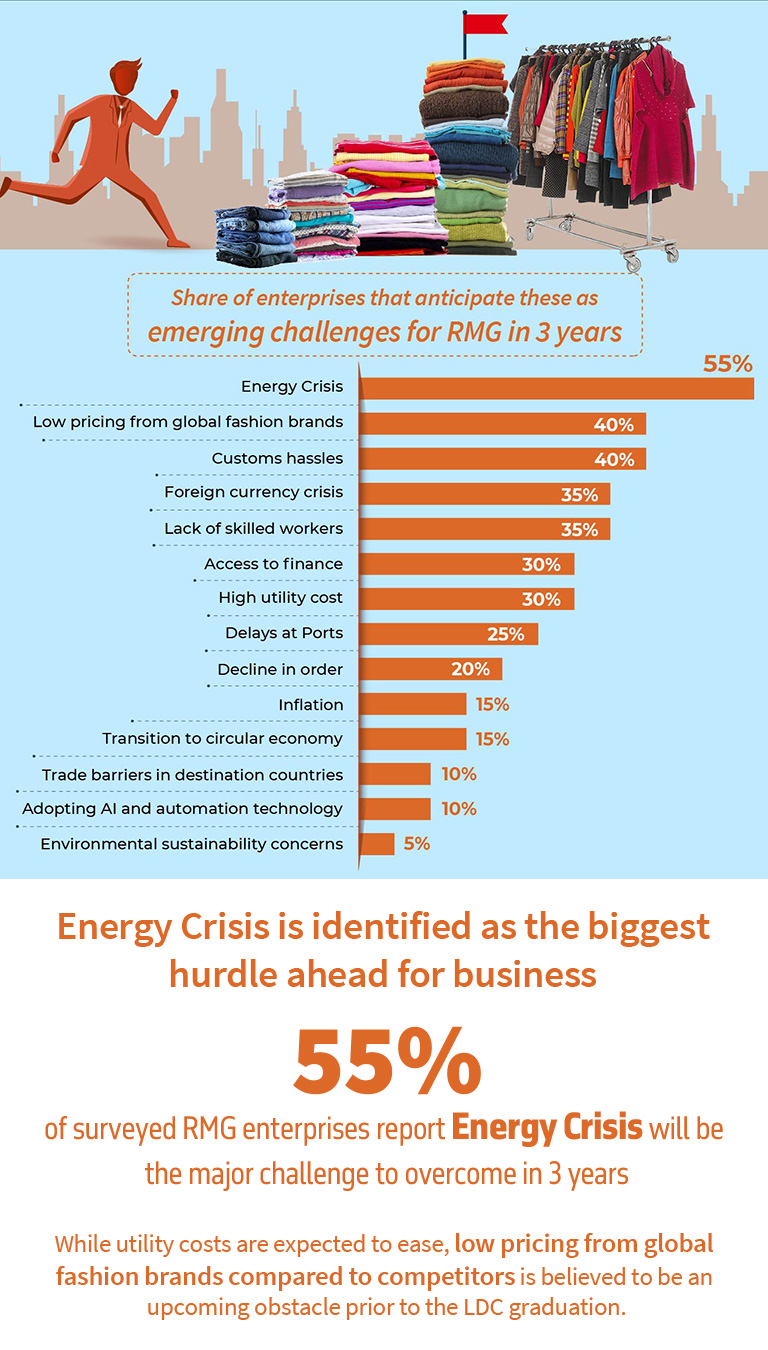
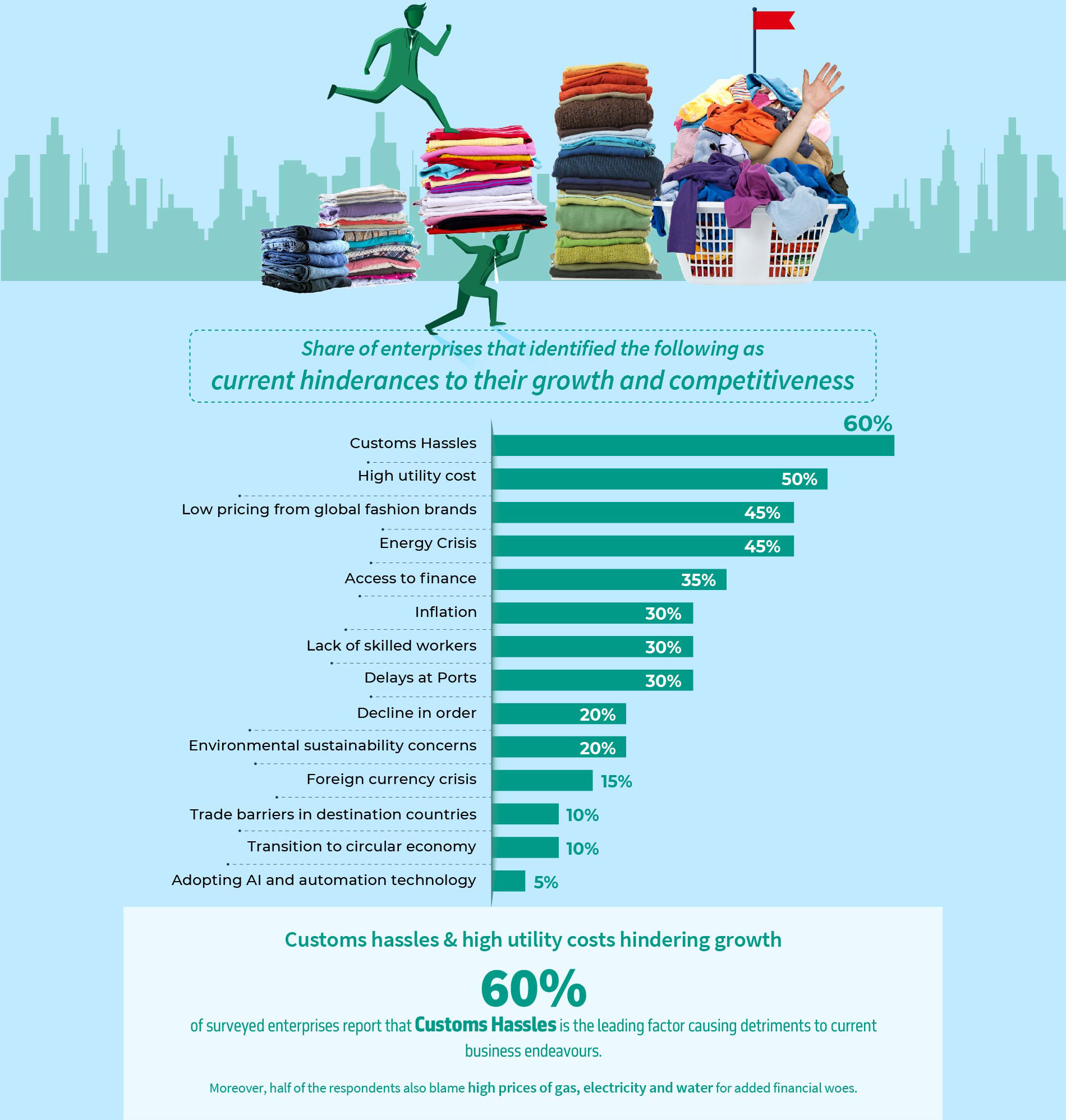
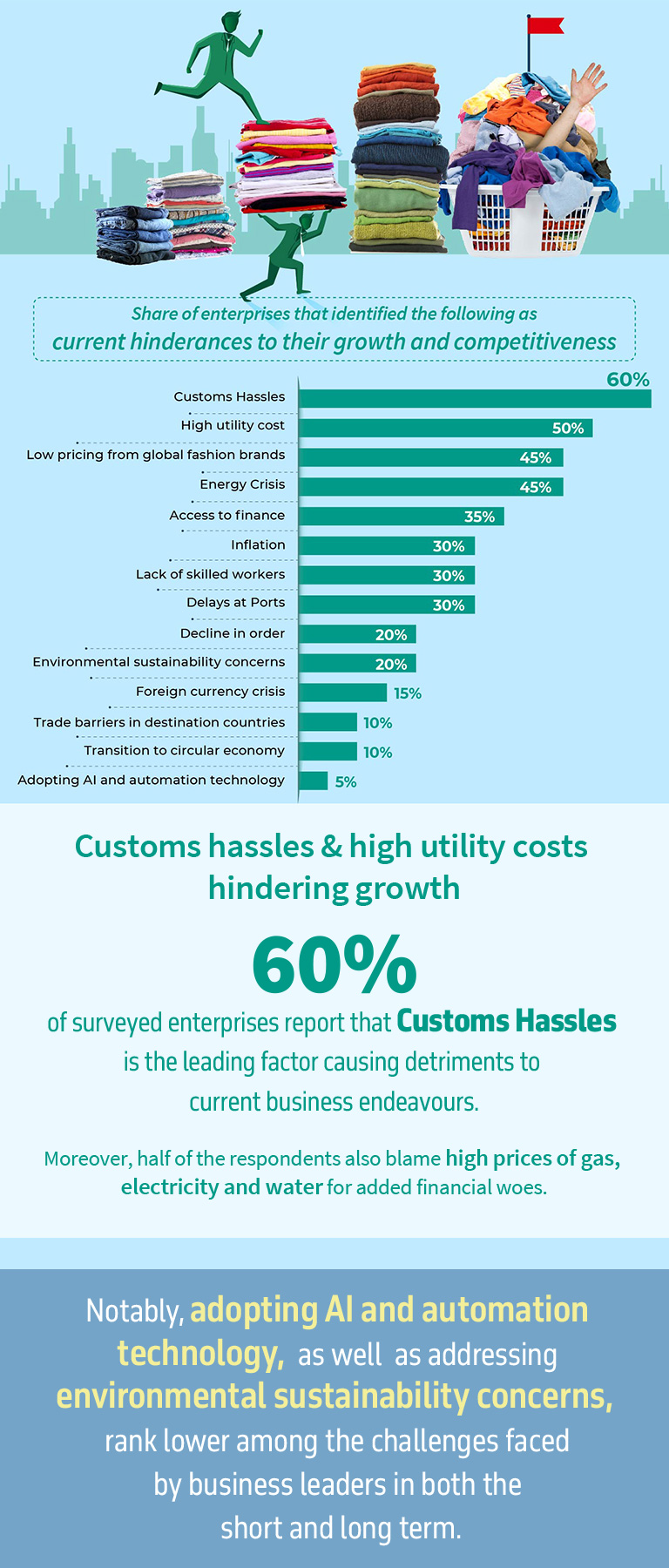


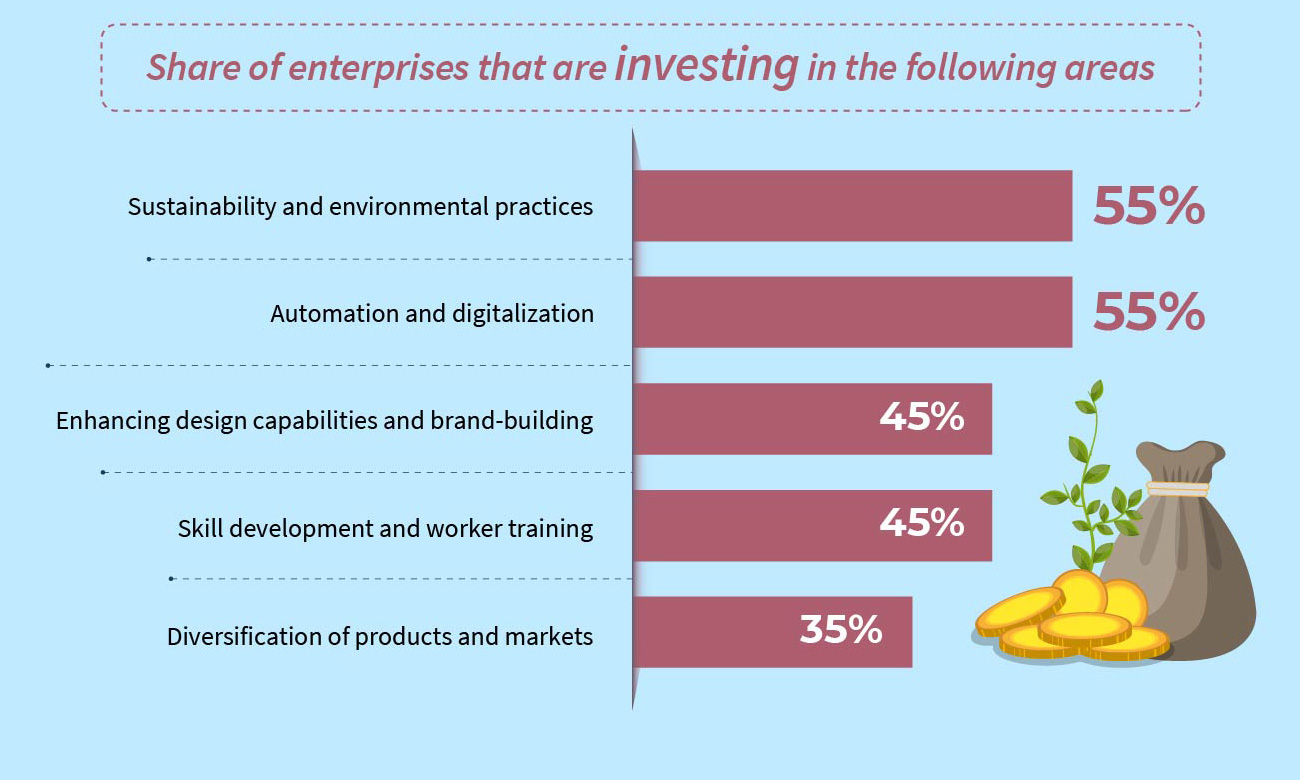


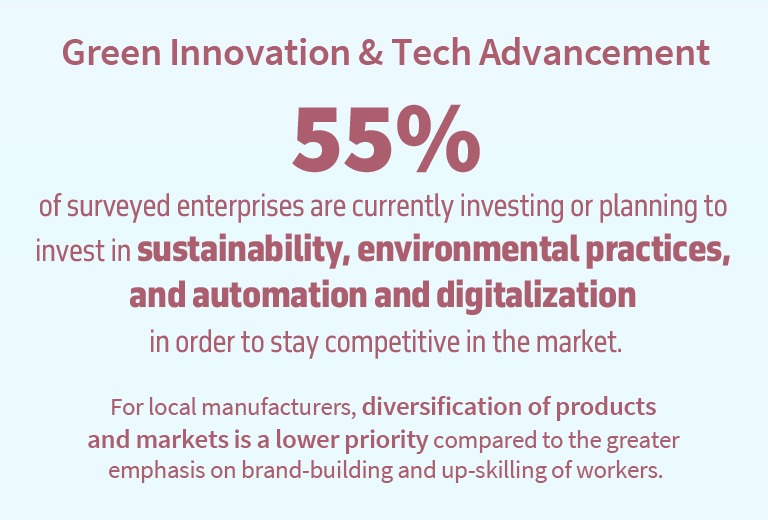

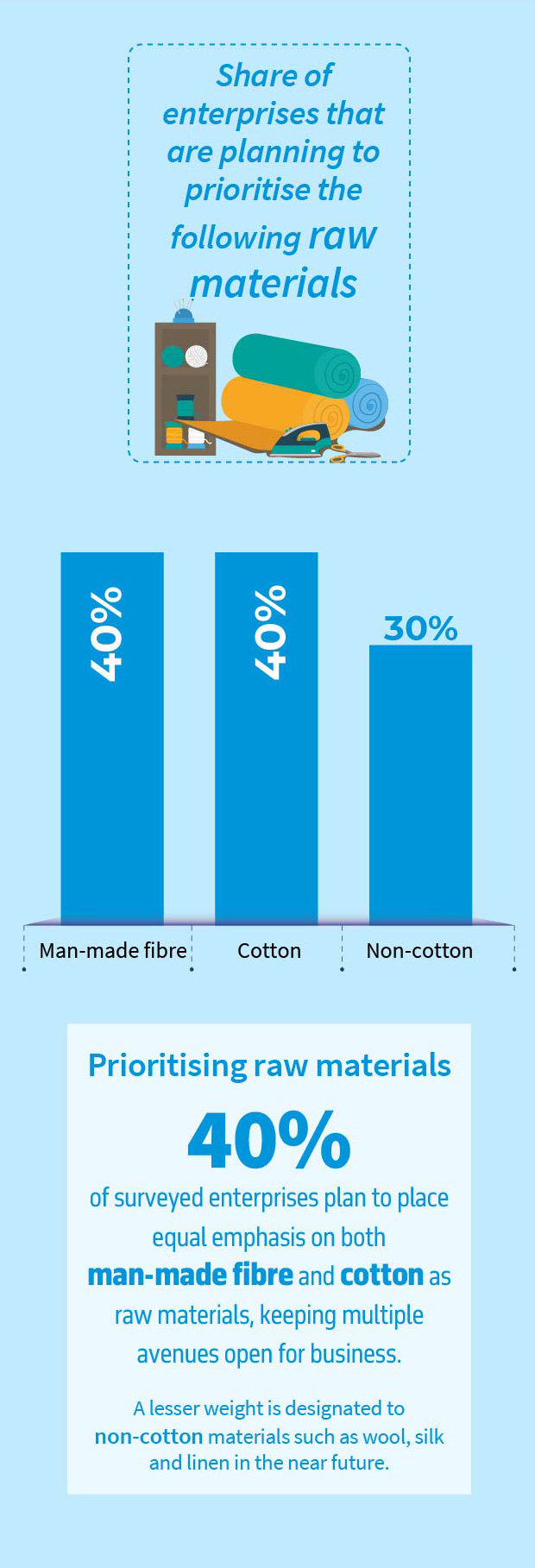
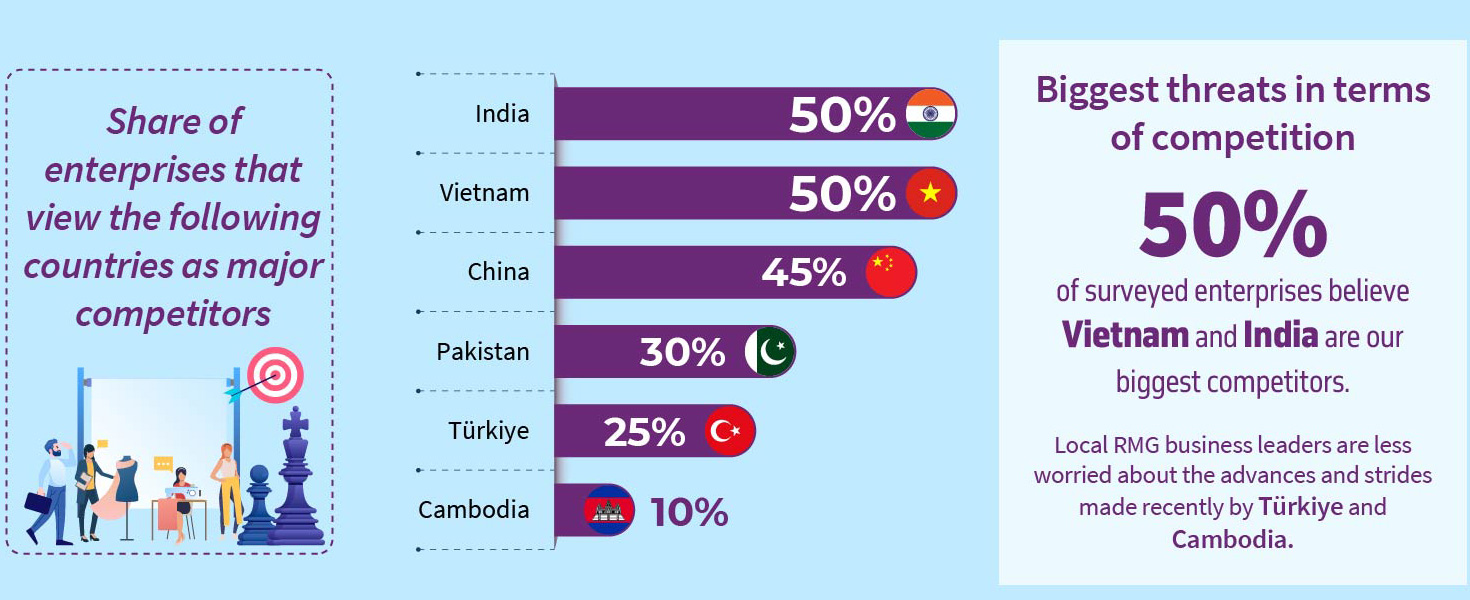
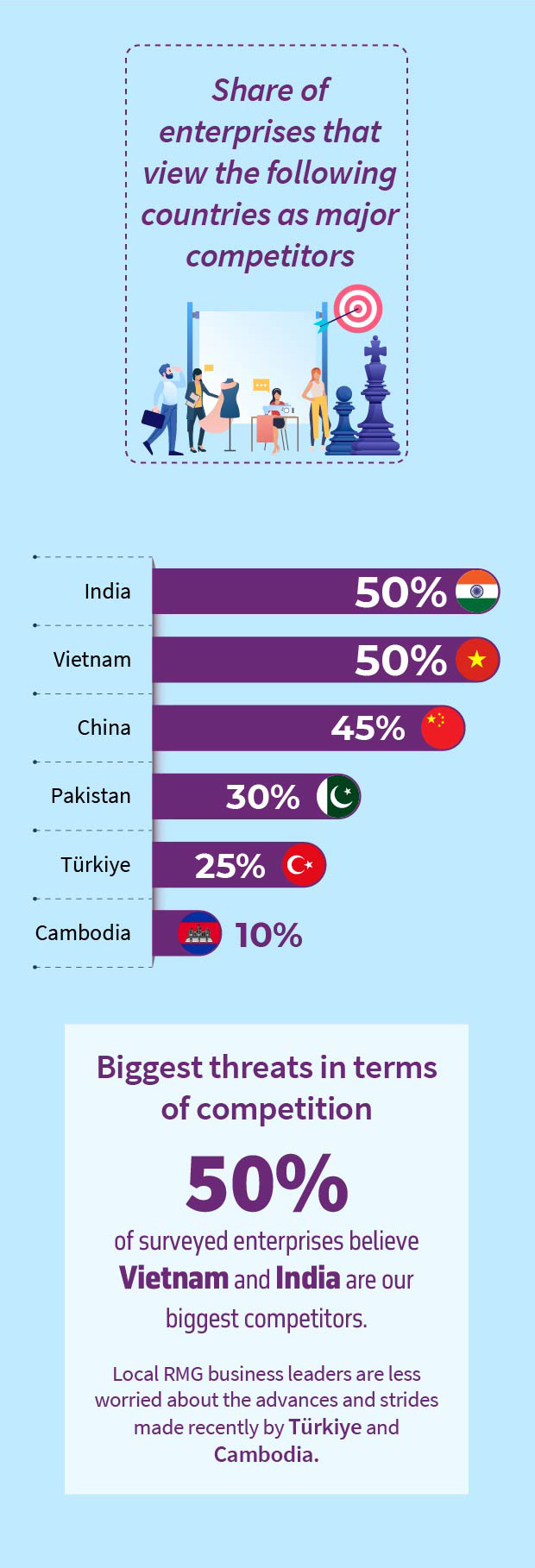
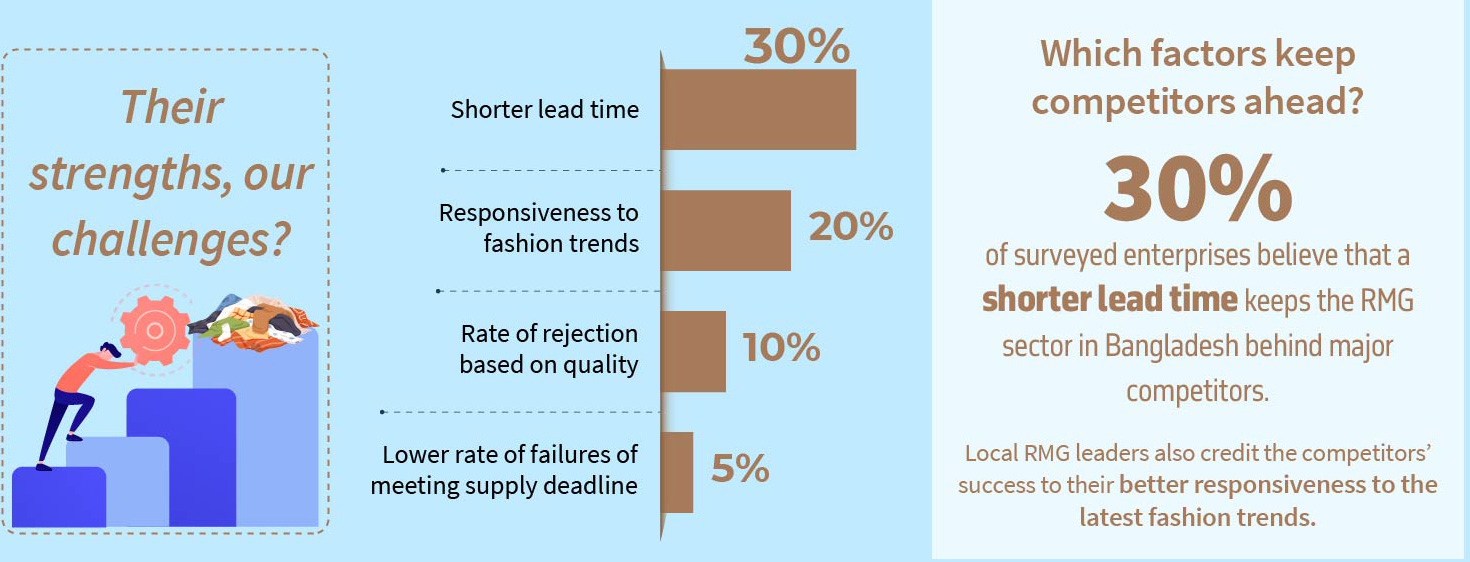
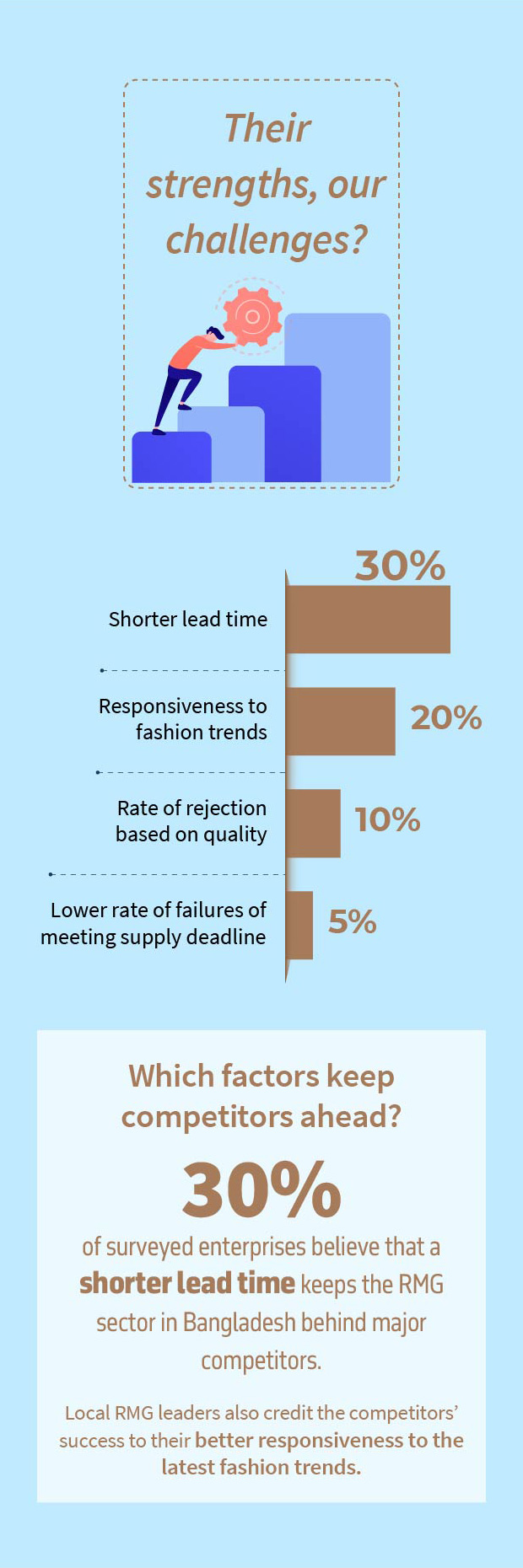

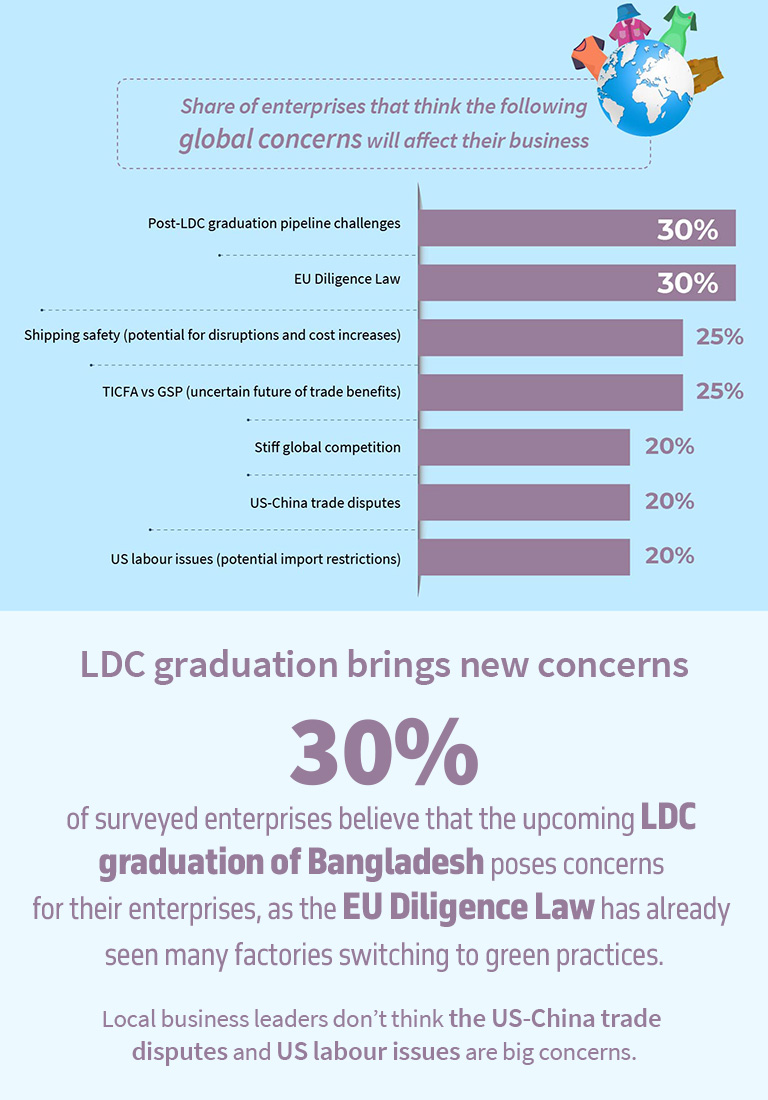
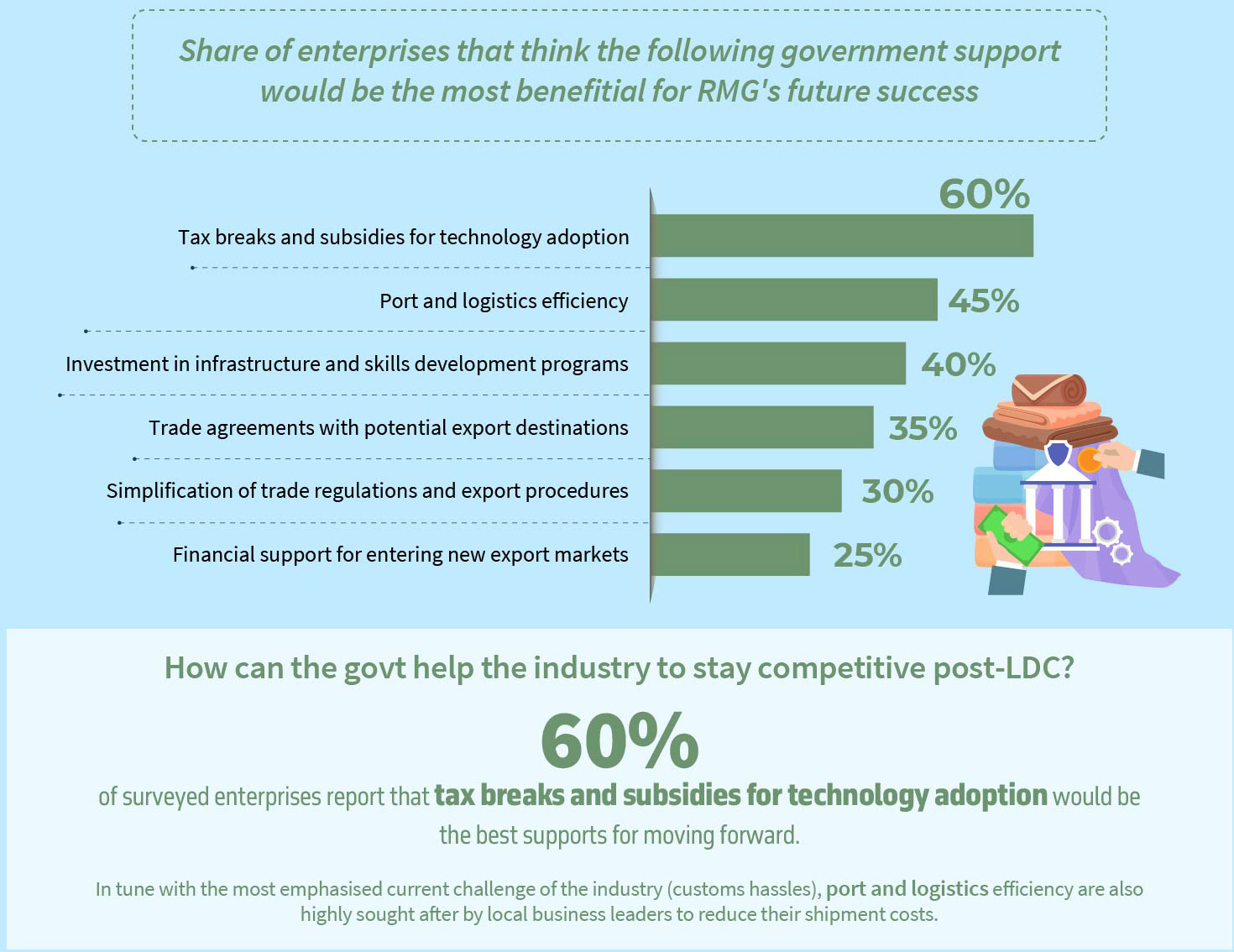
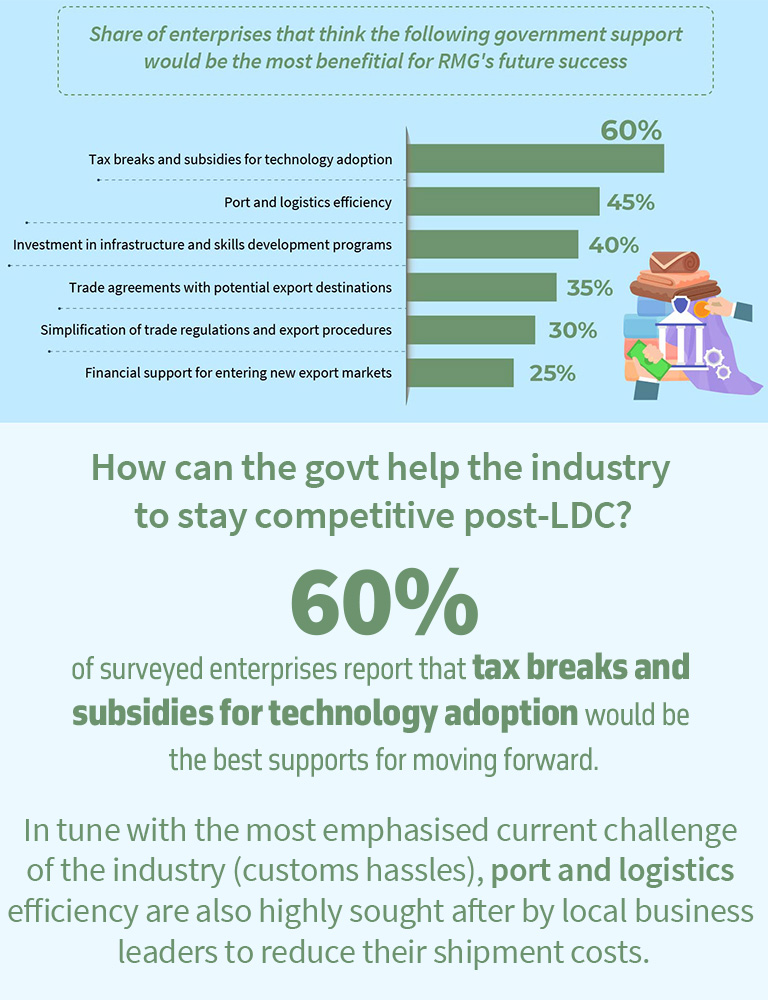
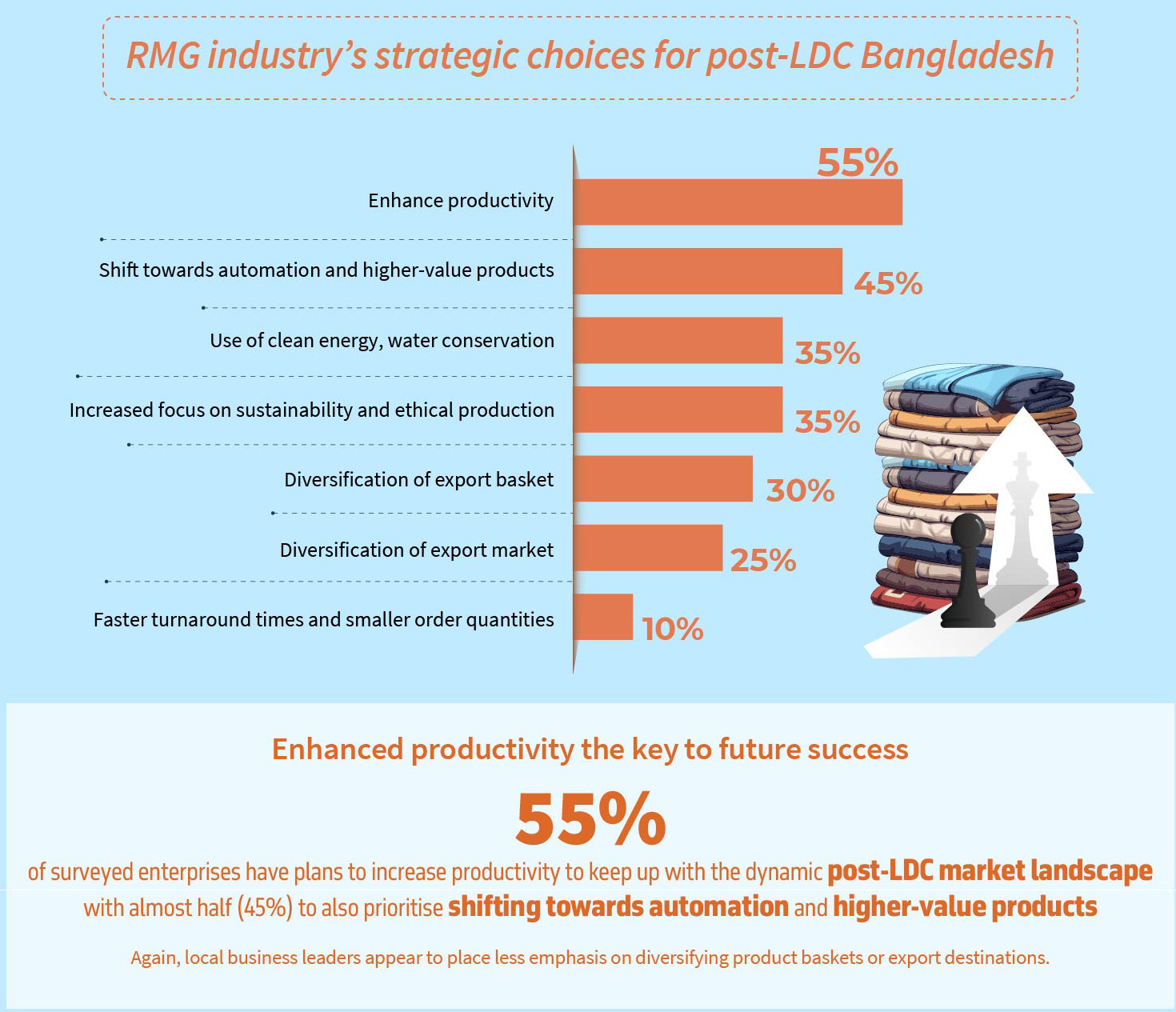
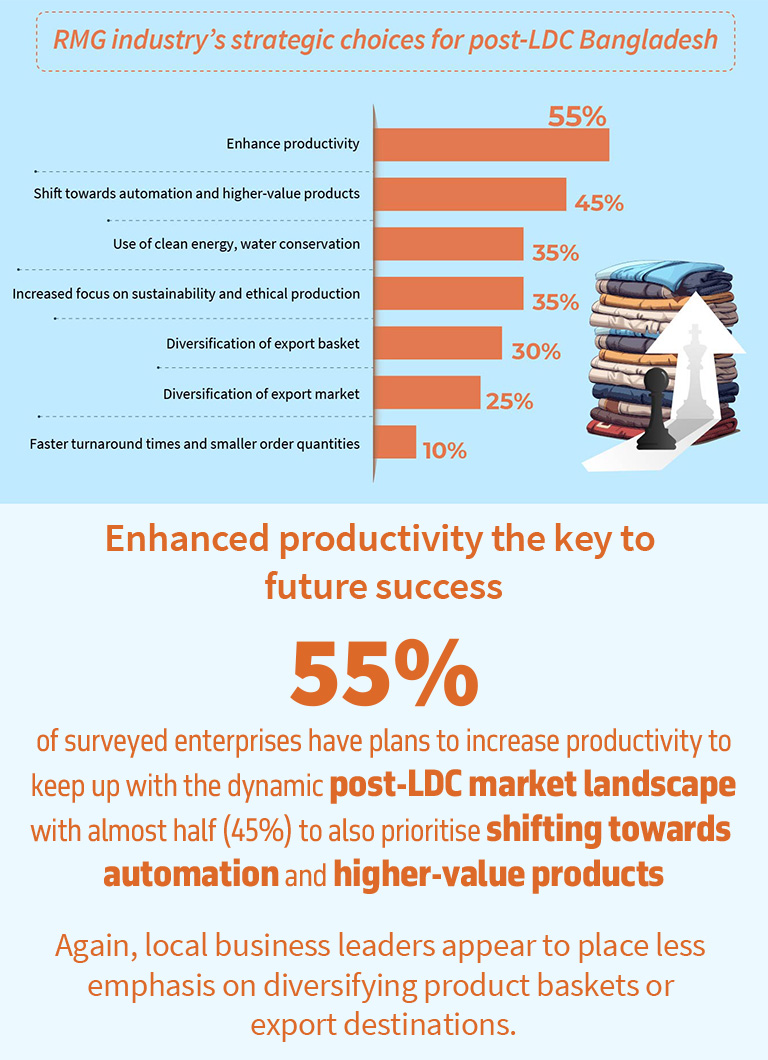
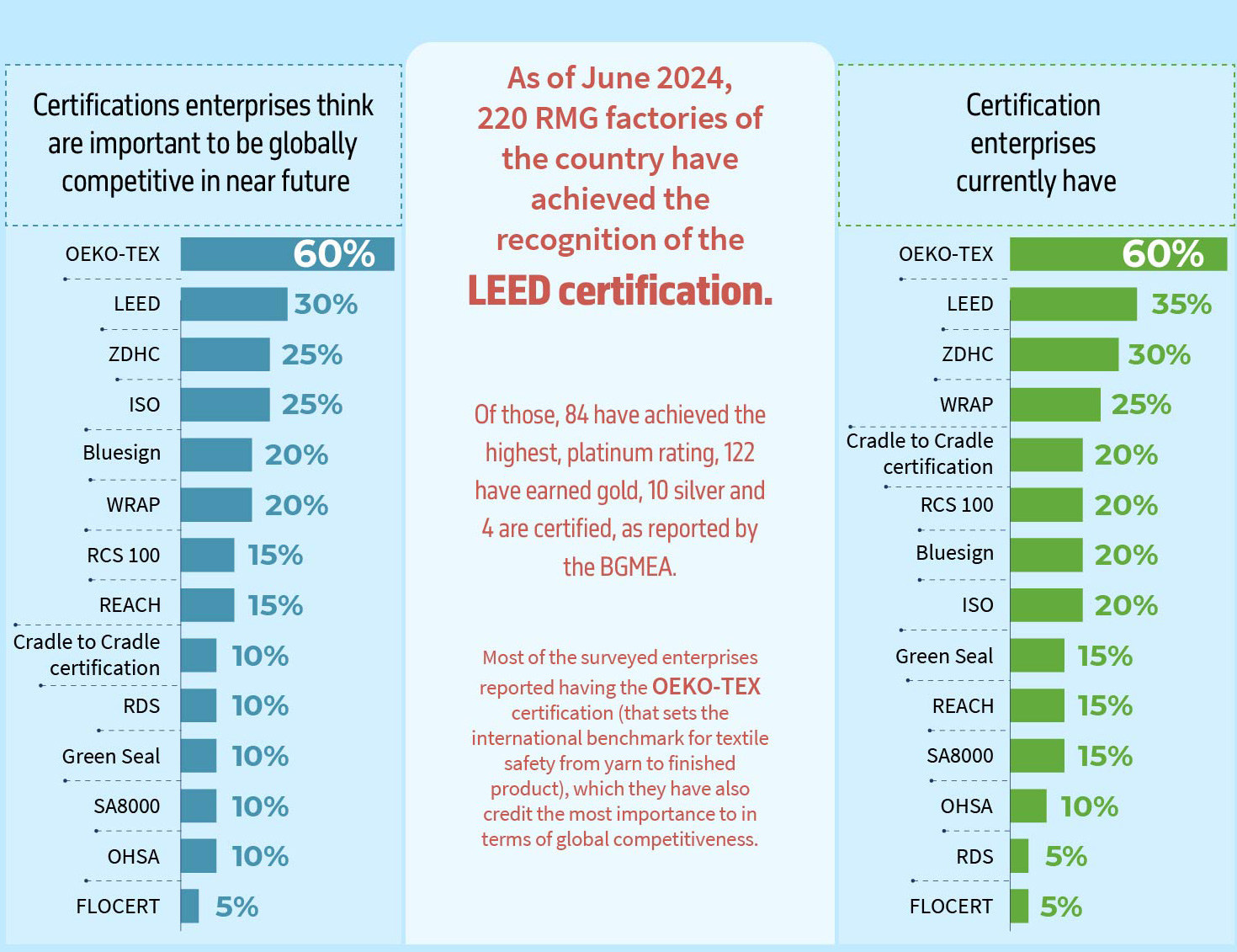
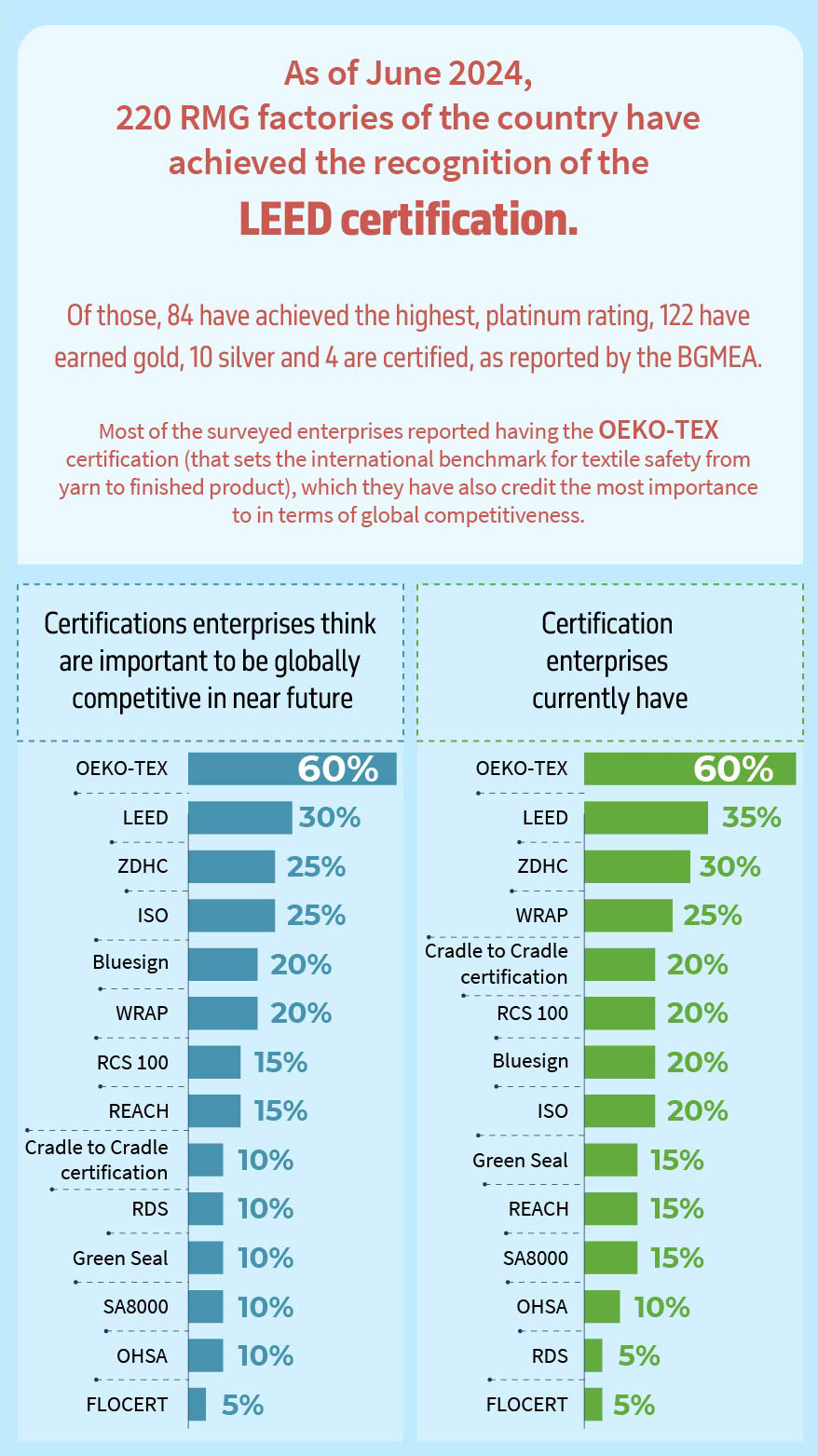

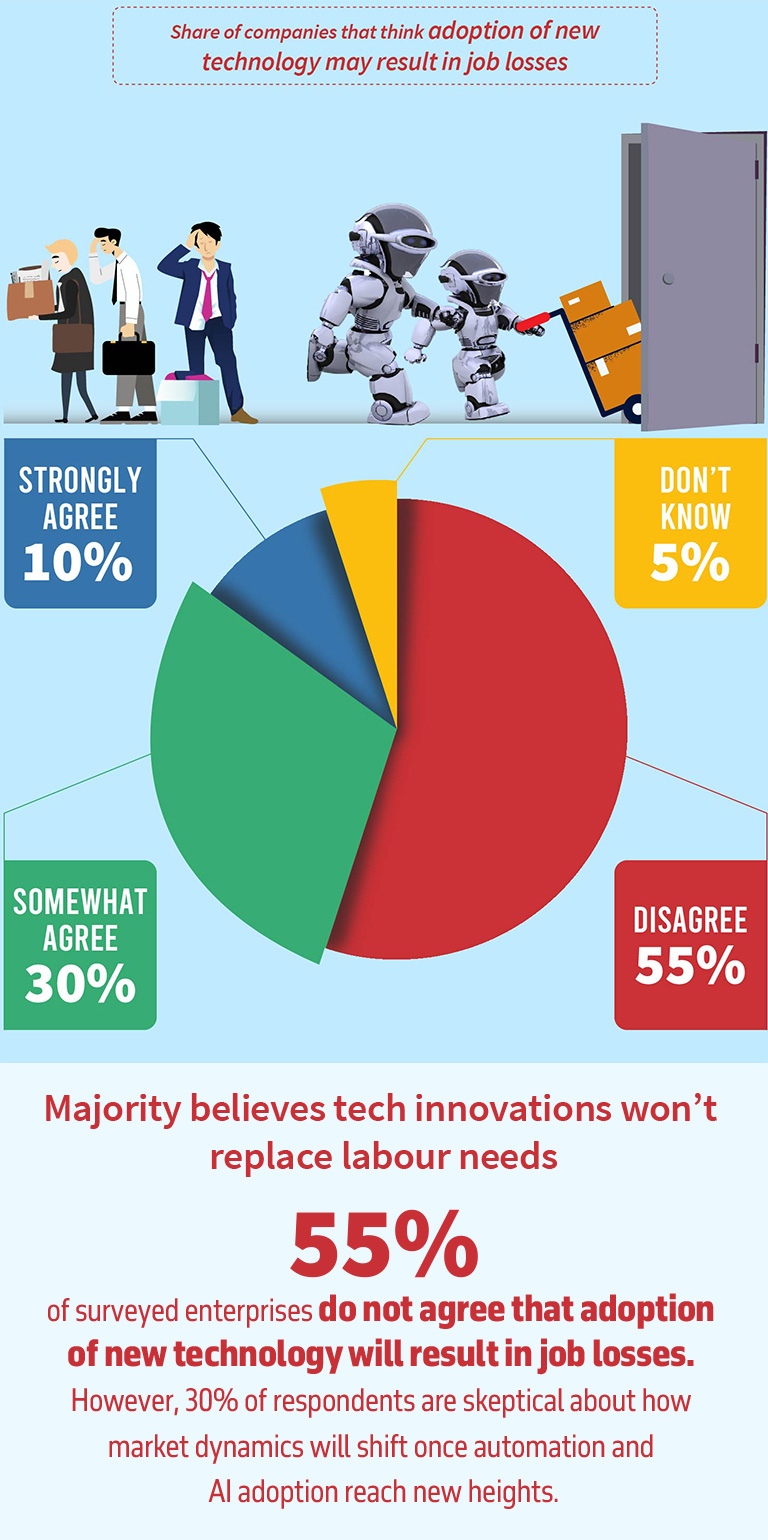
GoB Policy Support to the RMG
Industry: Historical Chronology
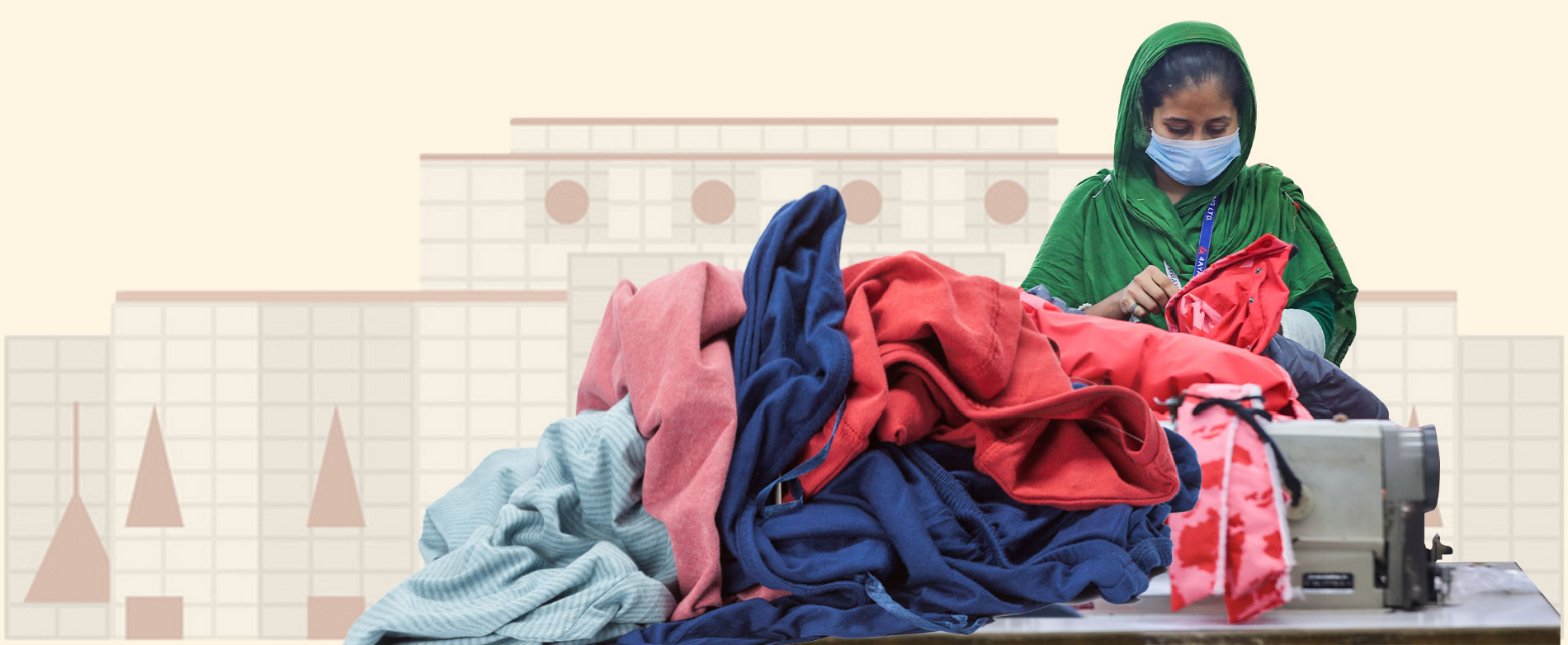

Bangladesh’s ready-made garments (RMG) sector is an epitome of success for the Bangladesh economy thanks to consistent innovative policy support over the last four decades along with the leadership of the sector. The sector is considered to be at its tipping point for various factors discussed separately, it is worthwhile to look back at how the proactive policy measures and their effective implementation made RMG the lifeline of Bangladesh’s economy, second to agriculture. It is to be noted that the success of Bangladesh’s RMG sector is a combination of internal factors and external factors.
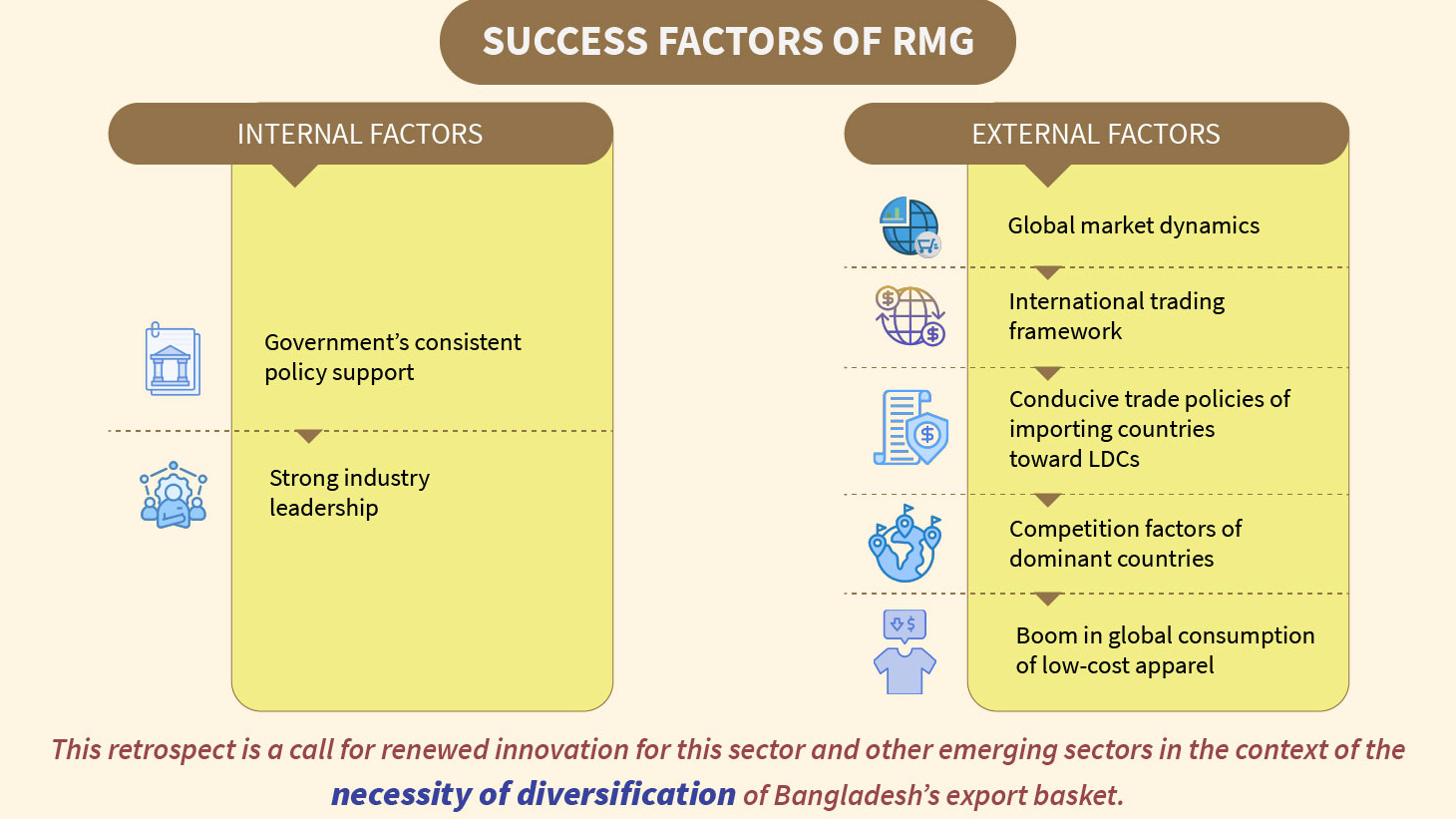
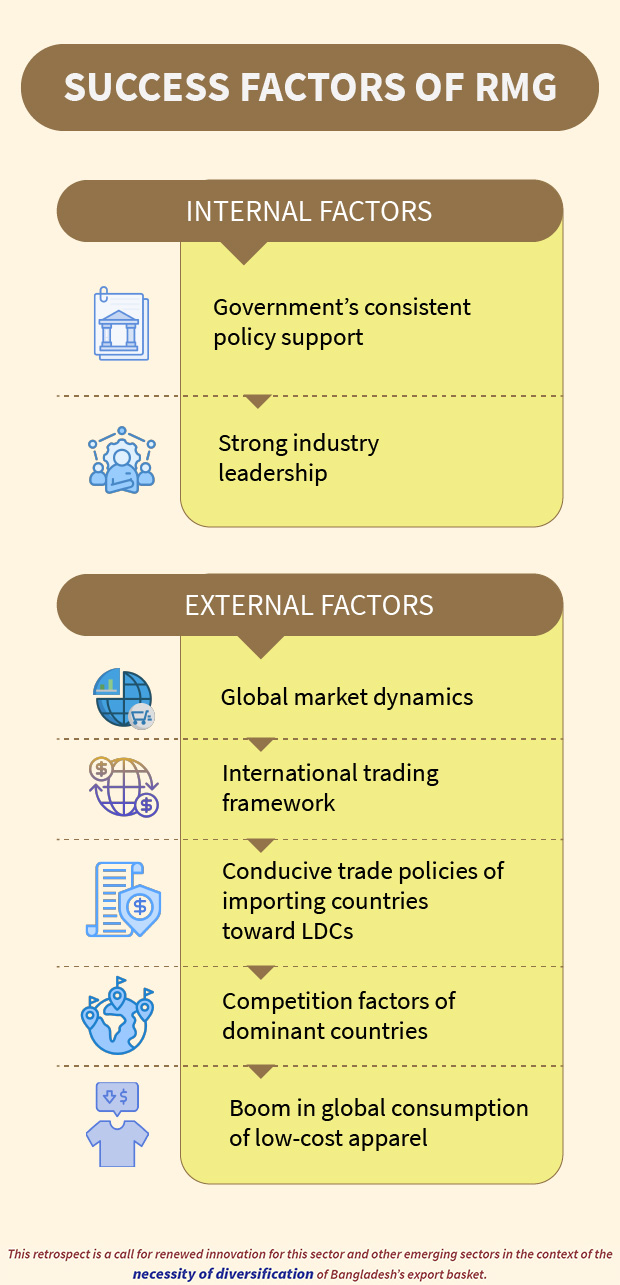


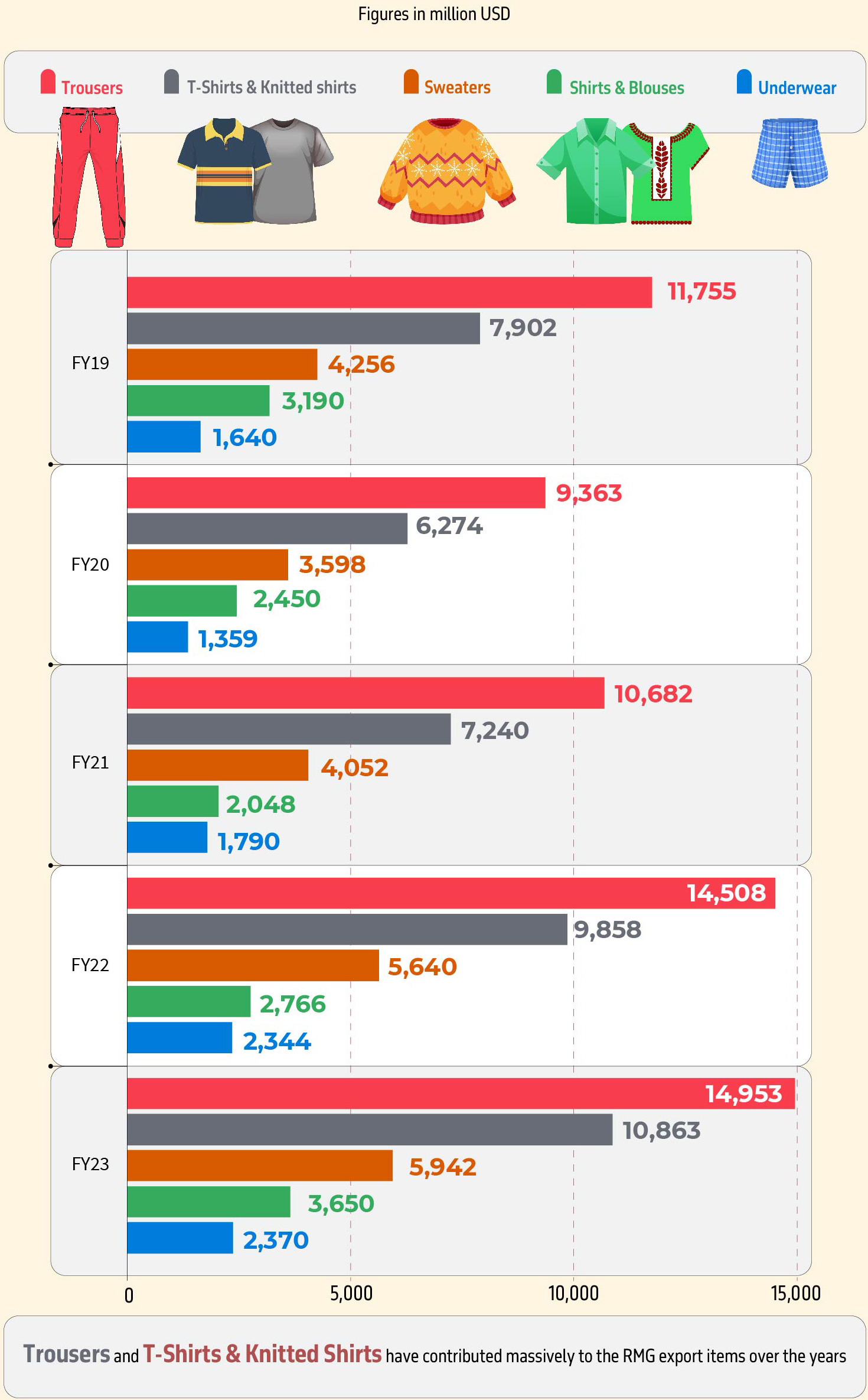

Source: BGMEA via EPB






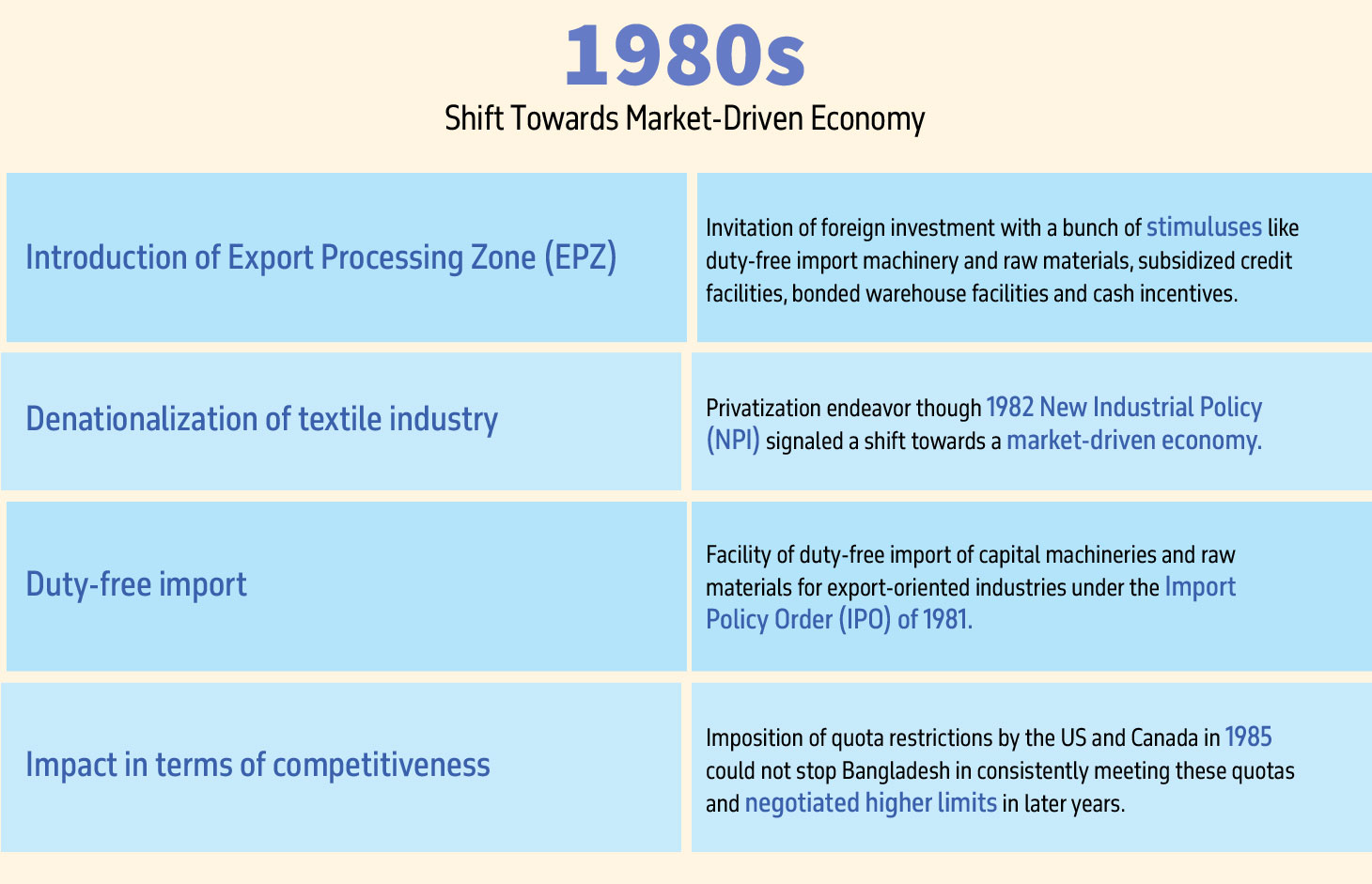
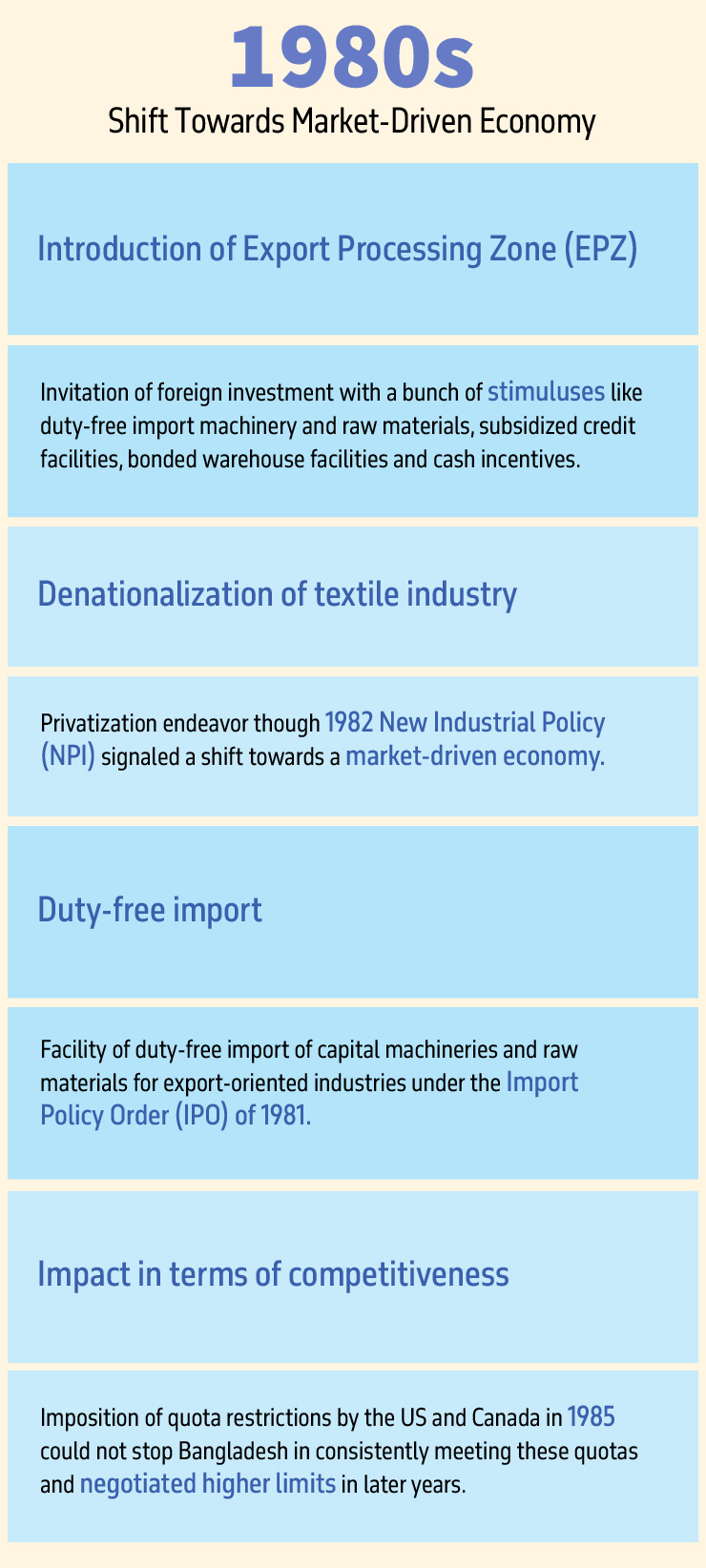
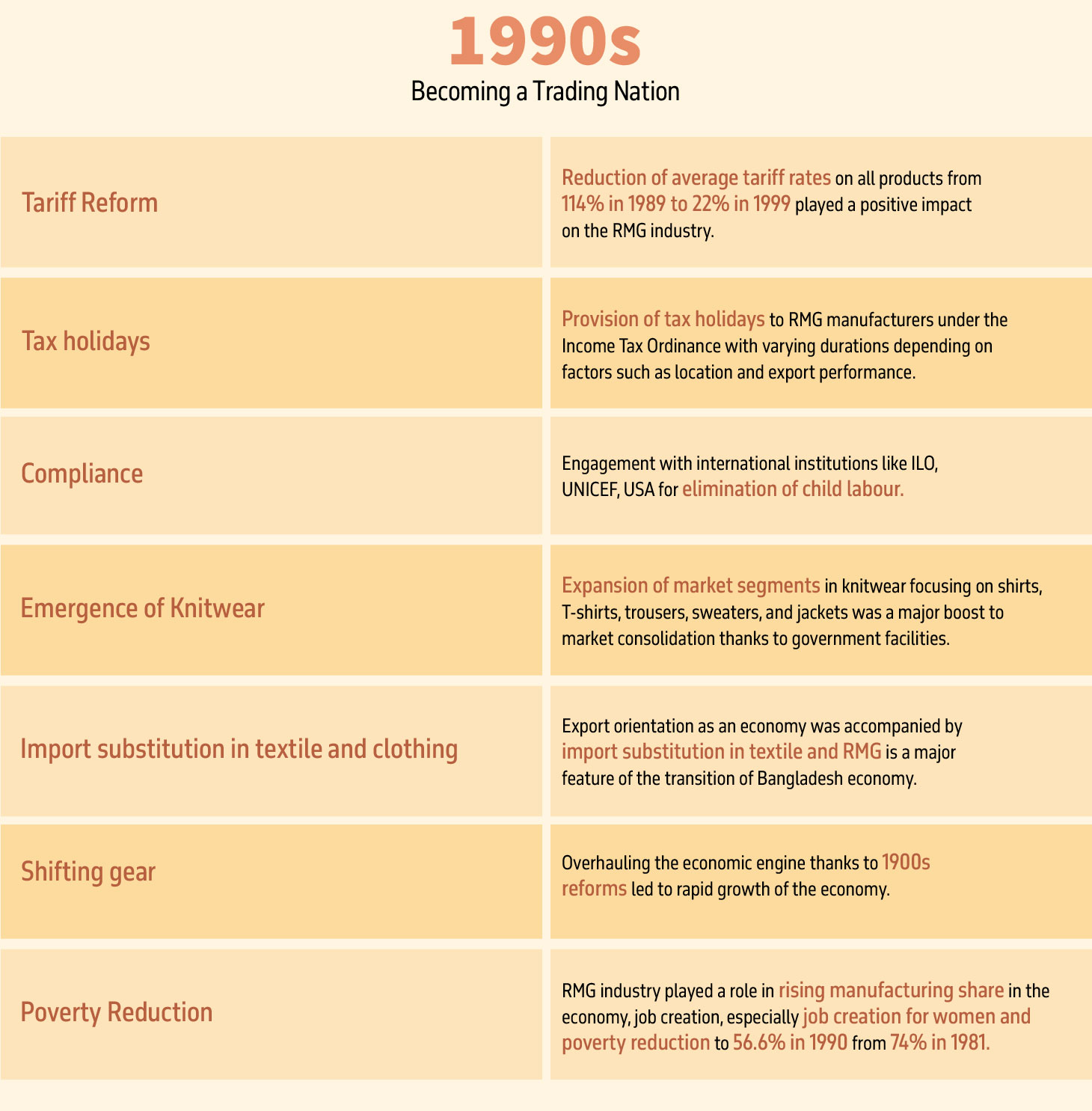


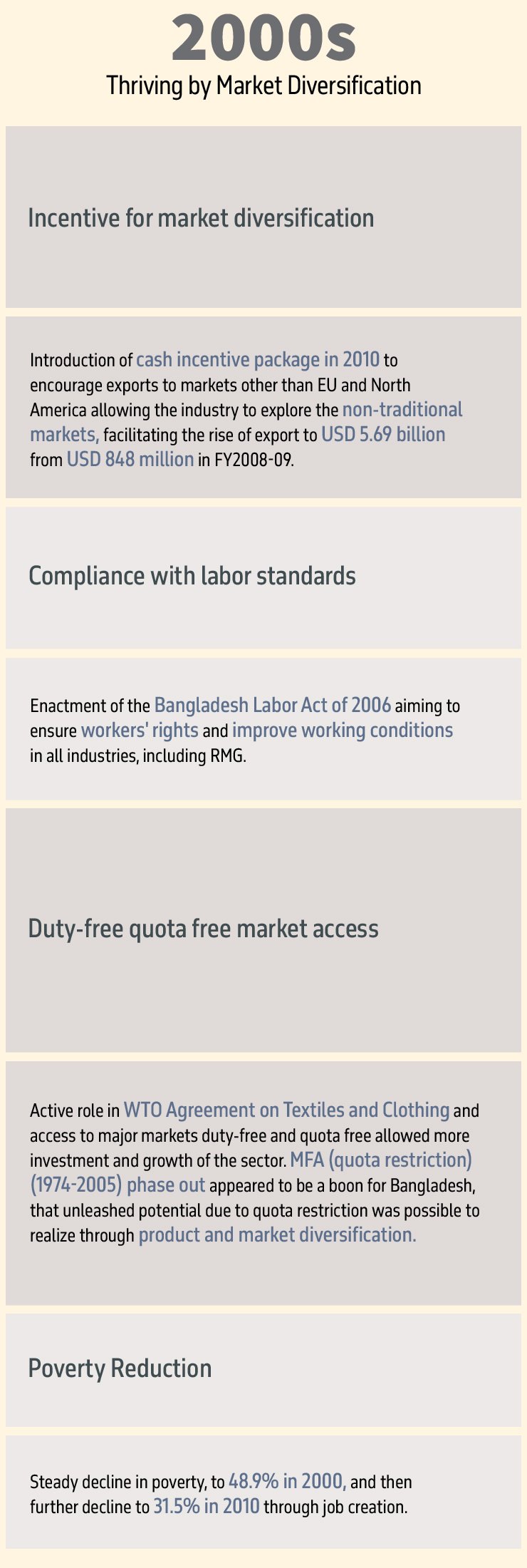
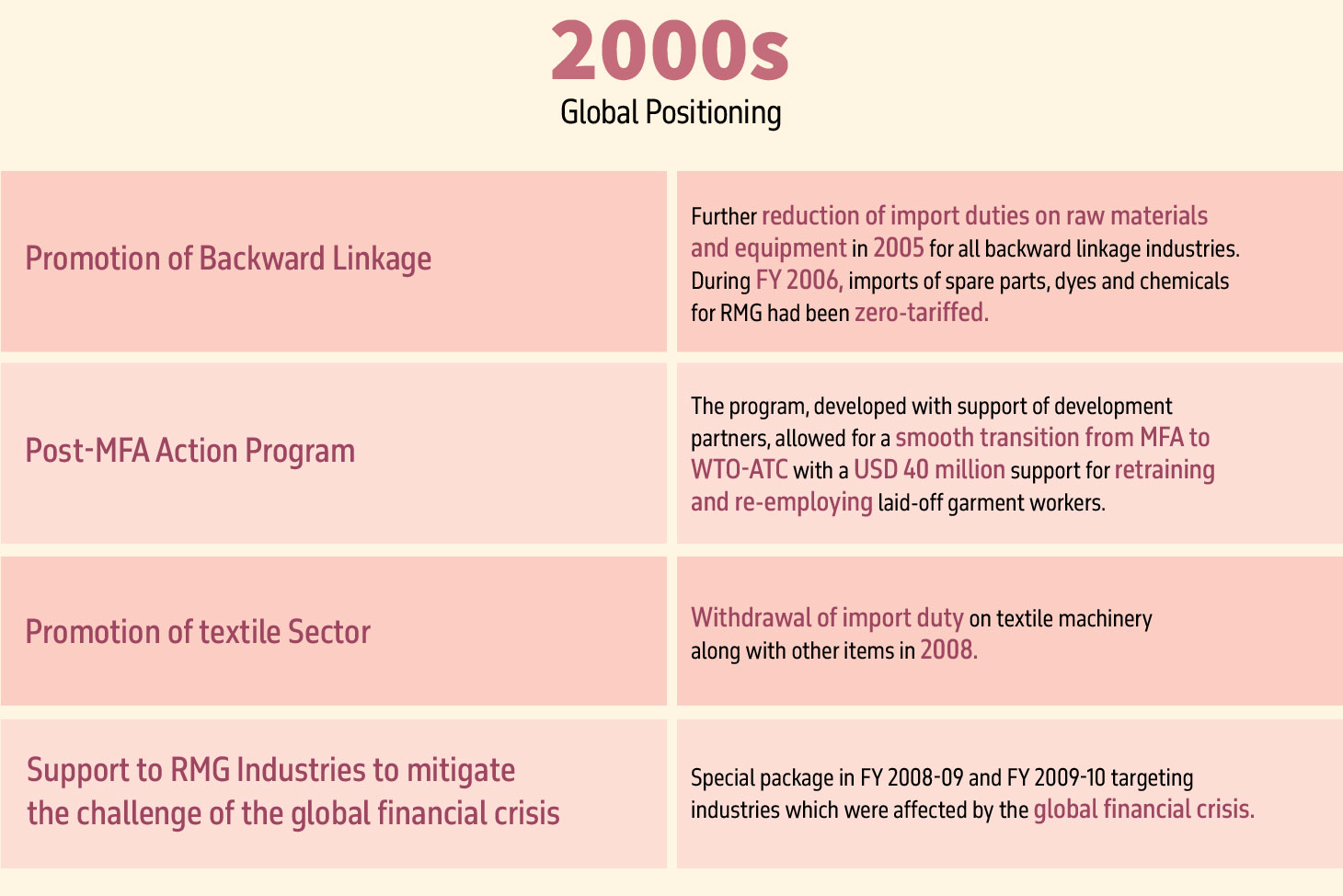

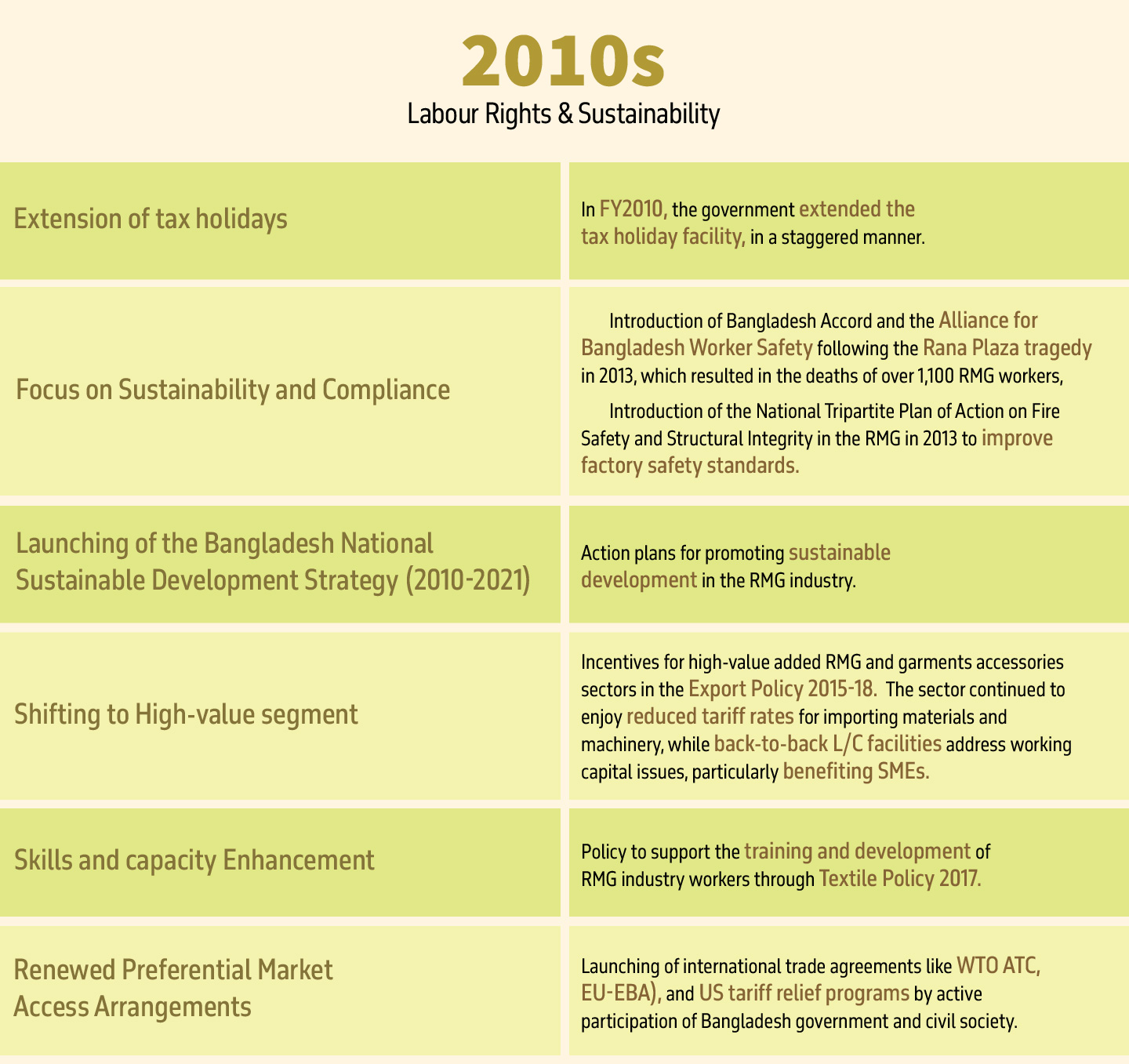




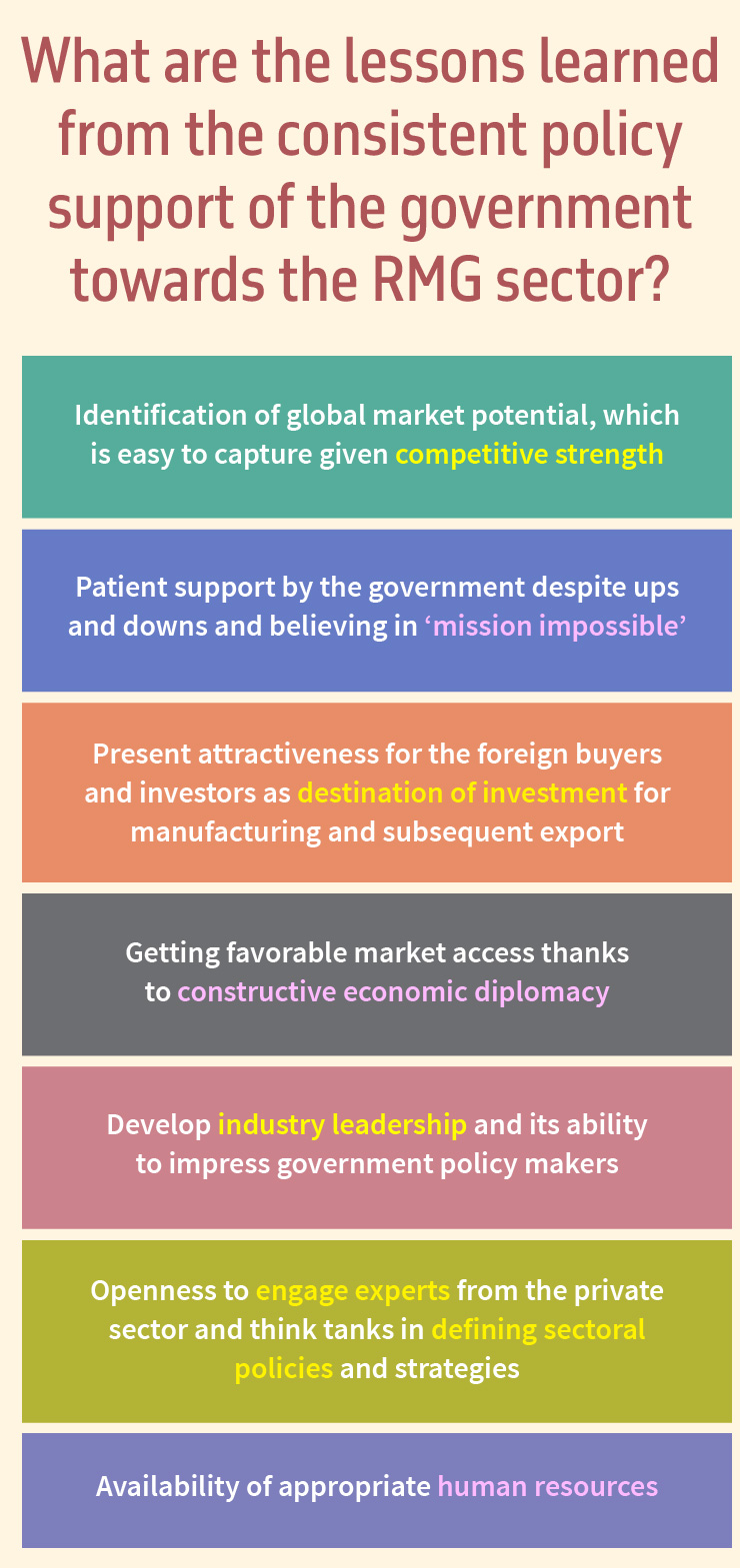
Automation in RMG sector: Impact on
Employment through a Gender Lens


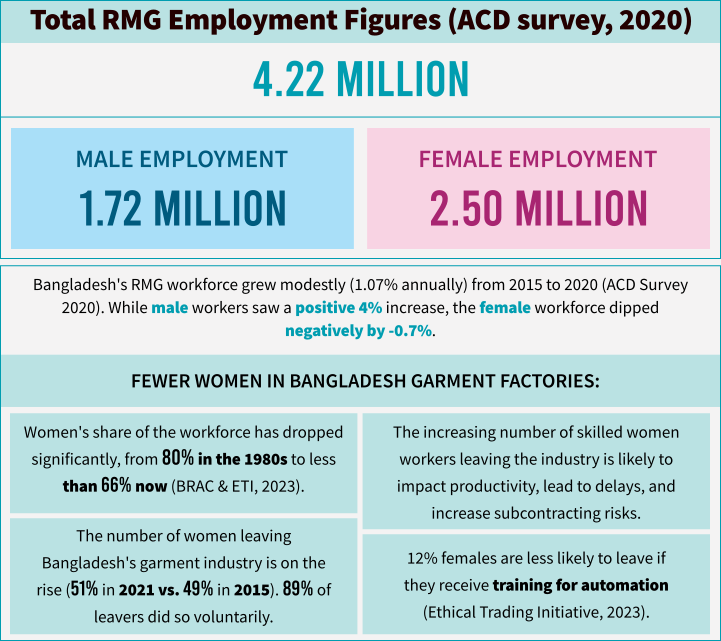

Data from ACD survey 2015 and 2020




The ACD surveys (2015 vs. 2020) show a decline in female employment within the knit and woven
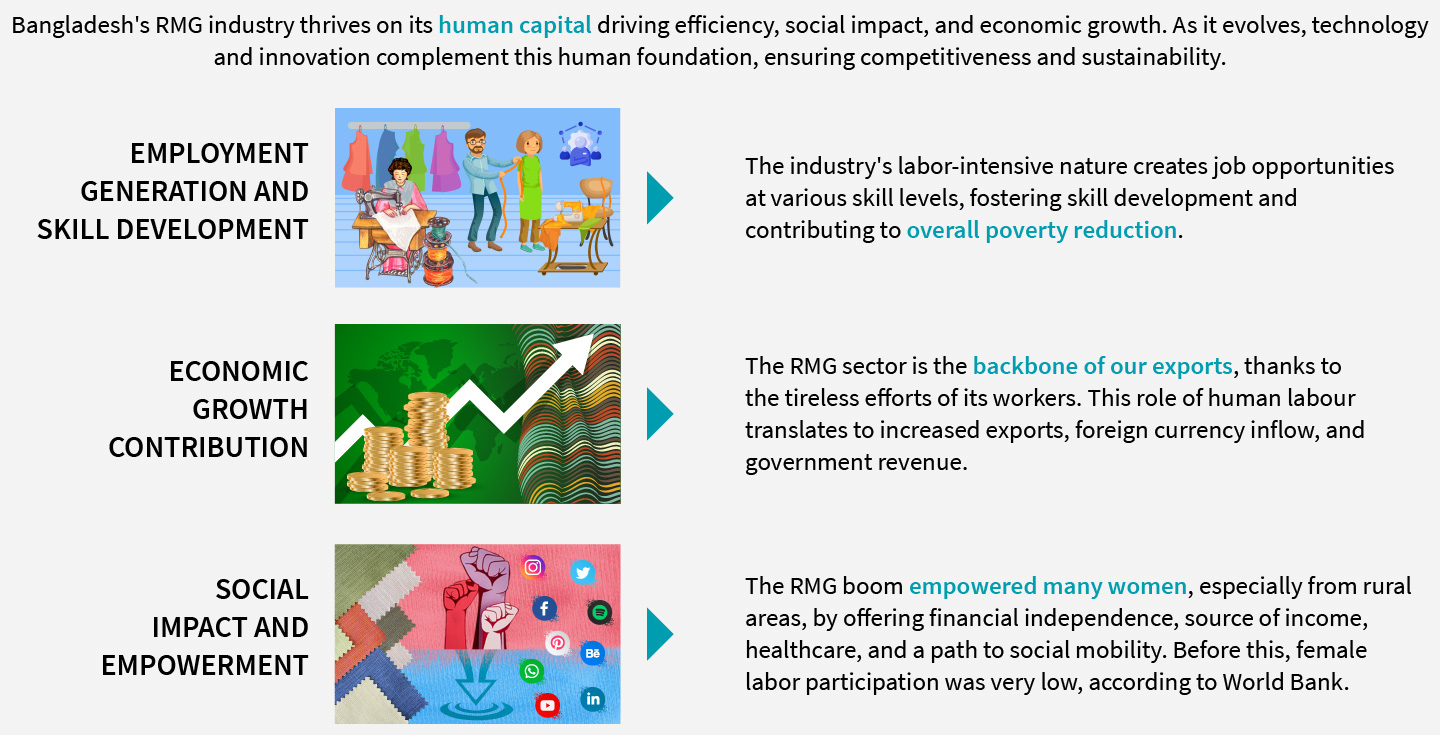
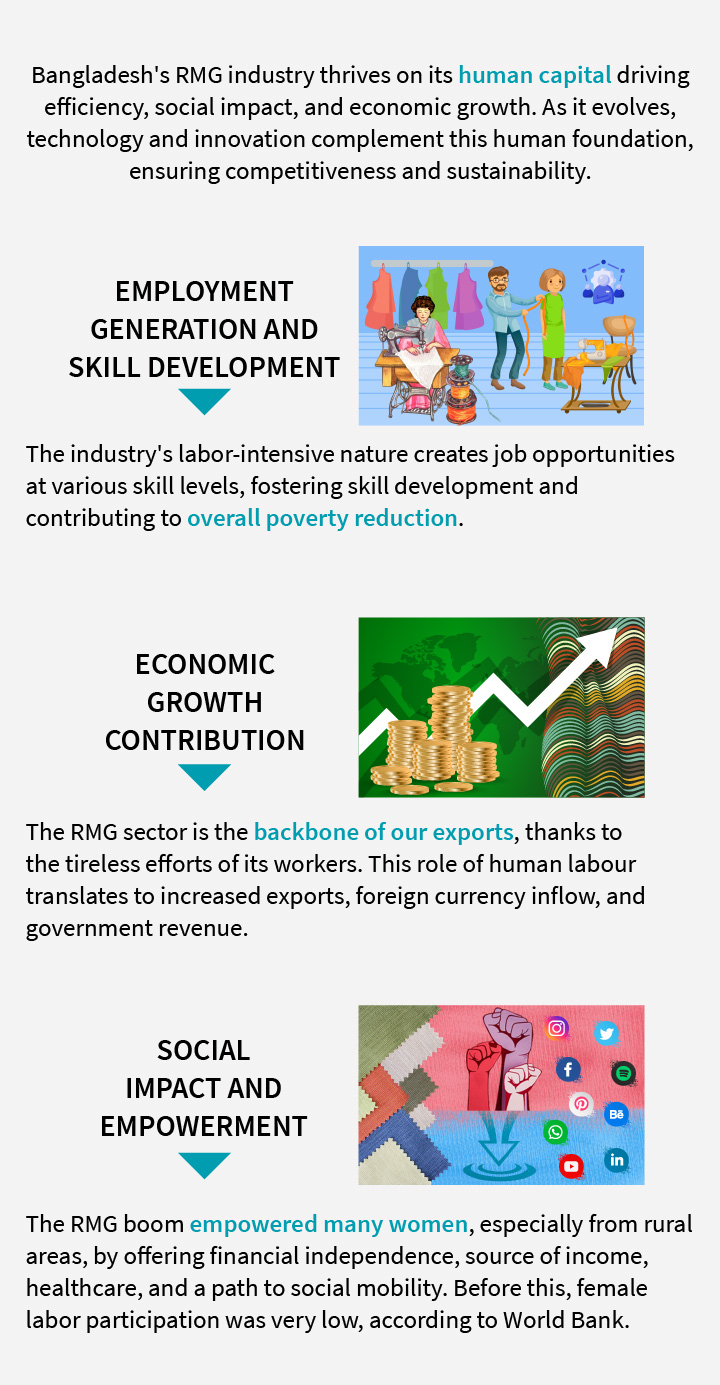
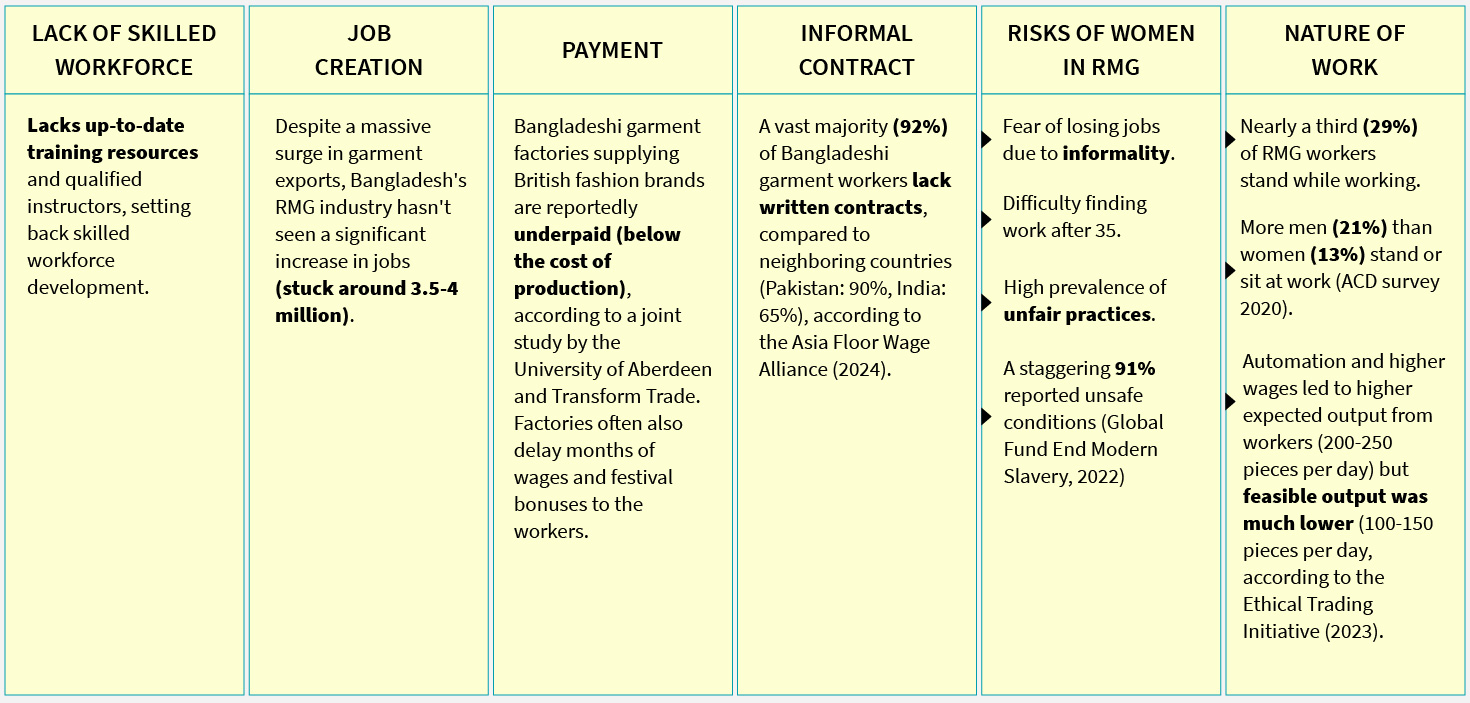
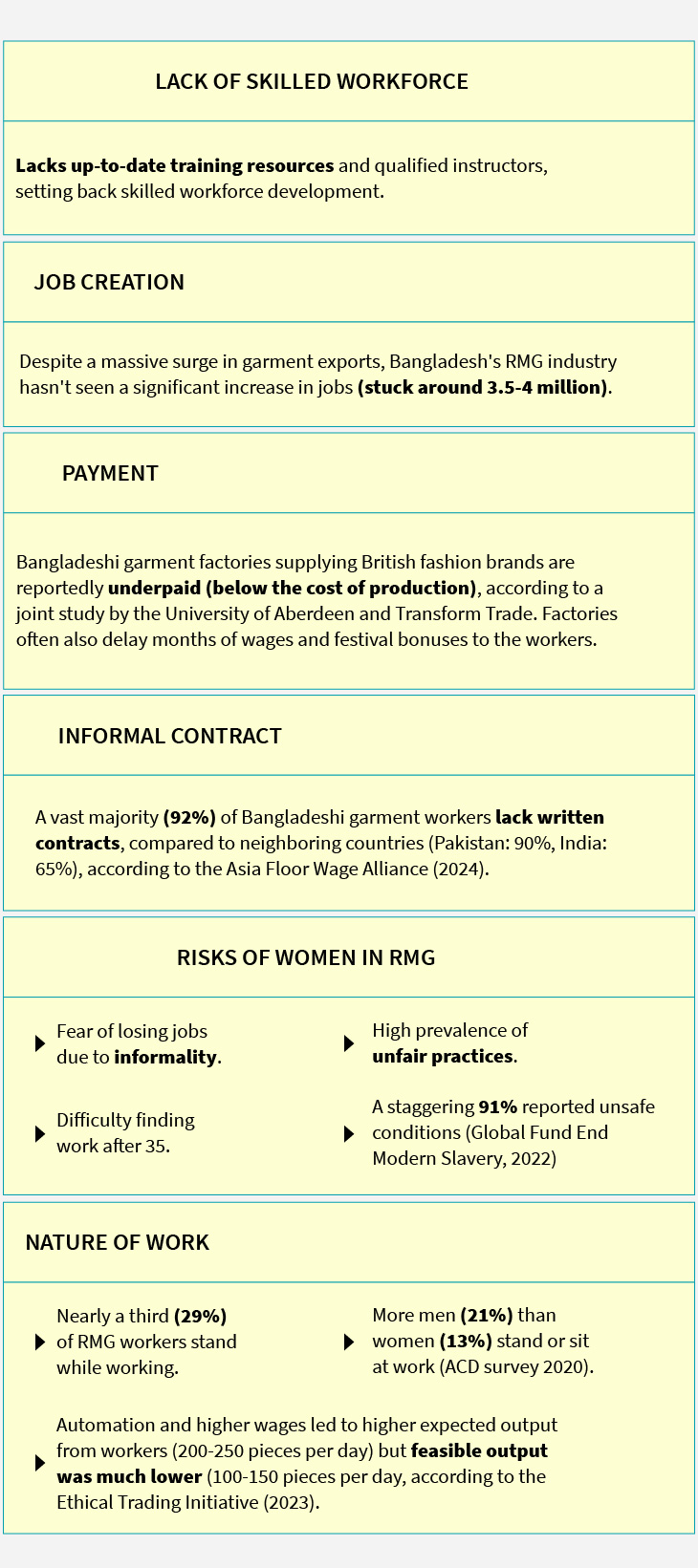


Source: Automation in Garment Manufacturing (The Textile Institute Book Series)
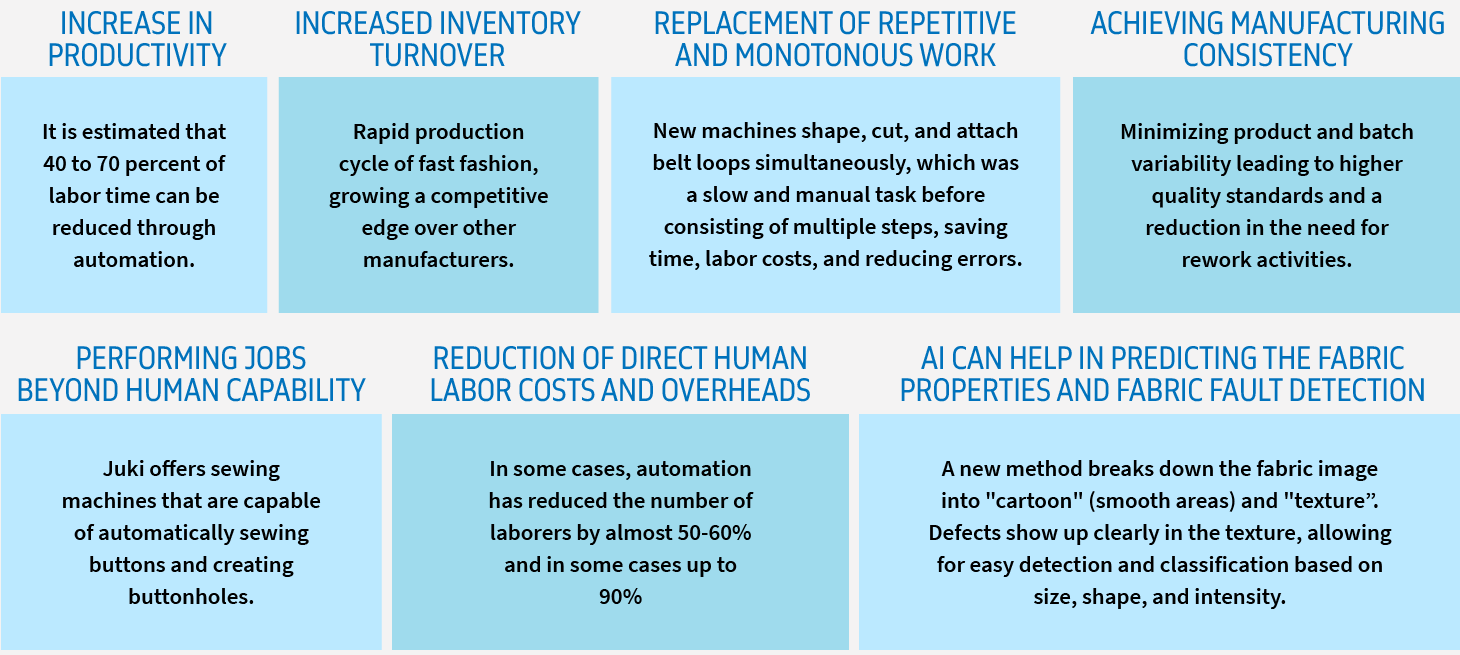
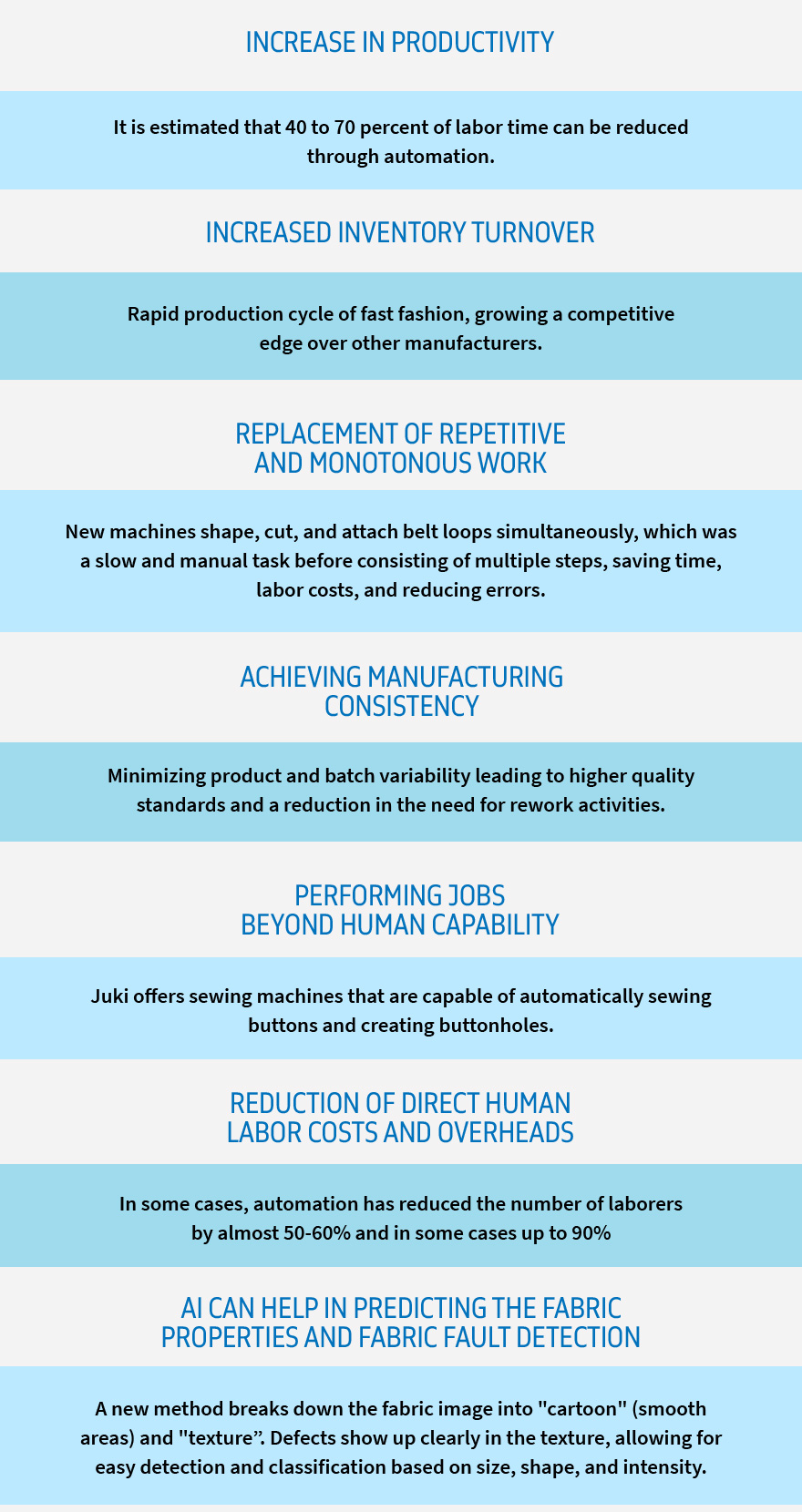
Sources: McKinsey, Royale International, Fibre2Fashion, Textile Focus and Textile Today

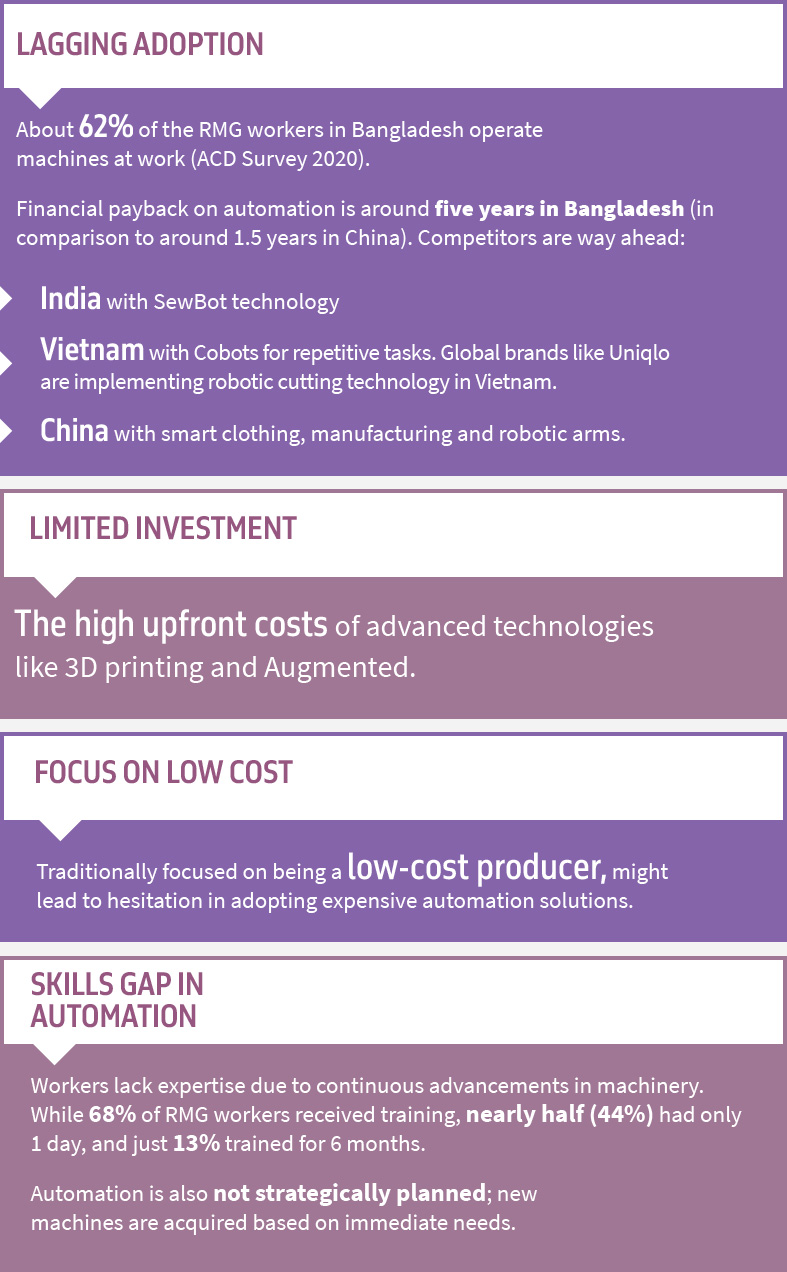
Sources: ACD Survey 2020, Centre for Policy Dialogue, RMG Bangladesh International, Fibre2Fashion, Textile Focus and Textile Today, Leading in the Digital Age: The Perspectives of the Readymade Garments Sector of Bangladesh, Mohammad Alam Tareque et al., (2020), Swiss EP, LightCastle




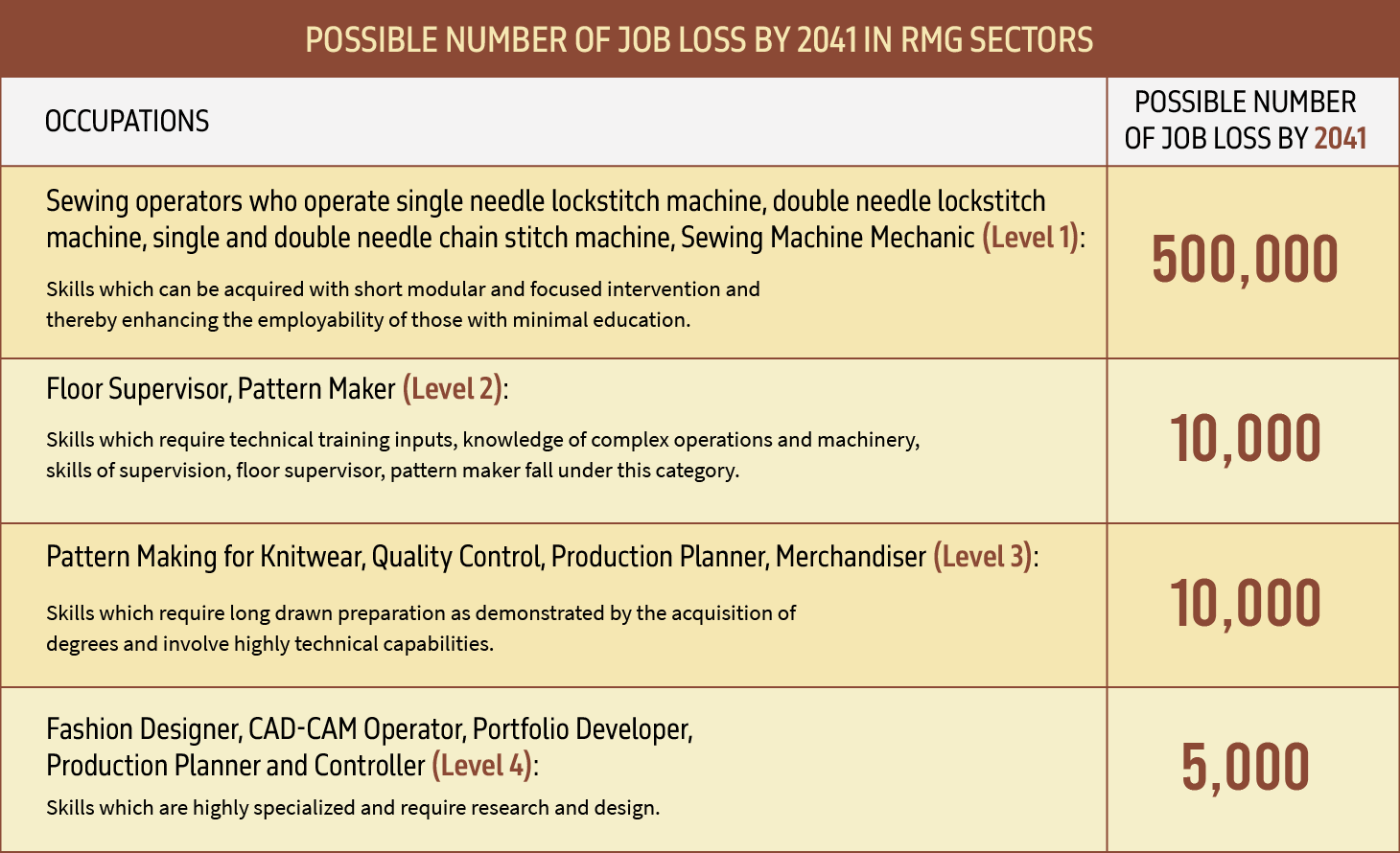

Source: – A2i PROGRAMME, GOVERNMENT OF BANGLADESH, 2019



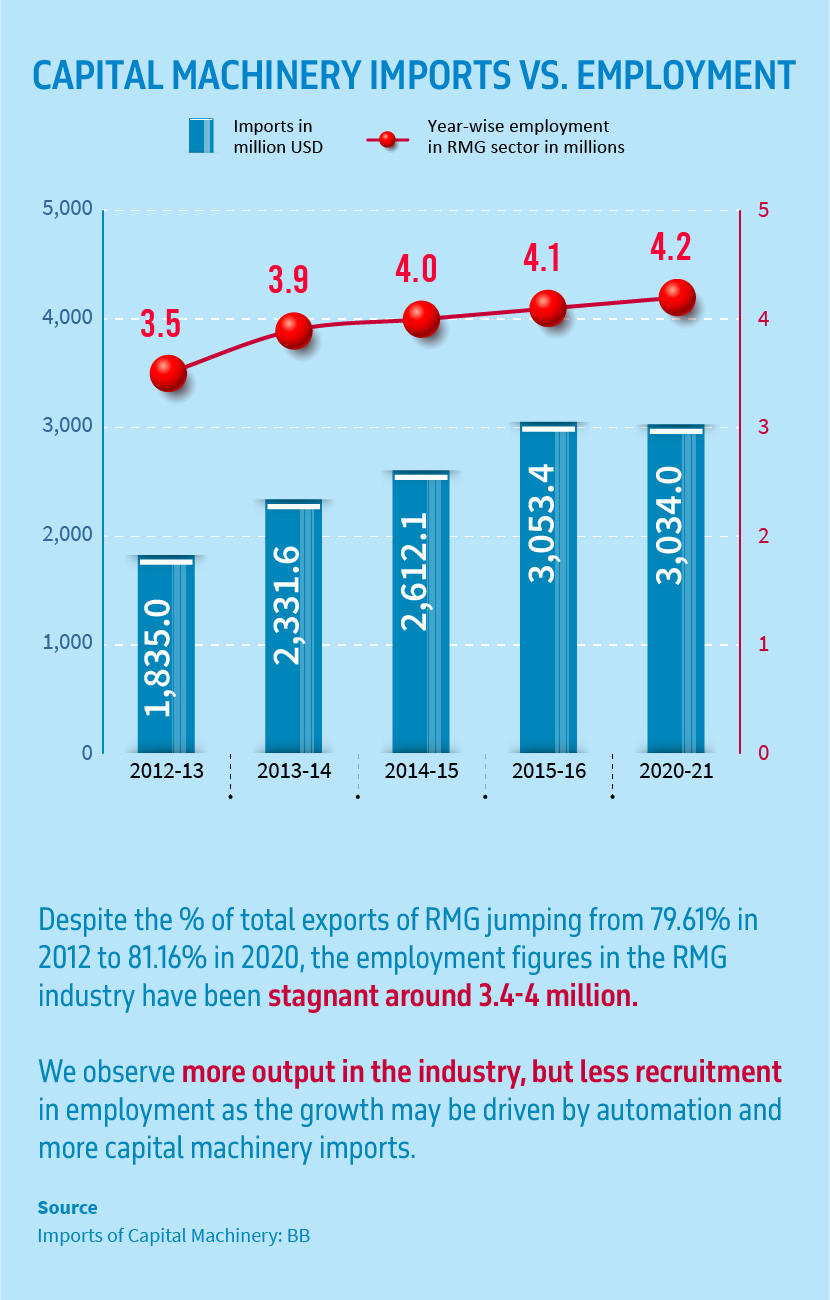

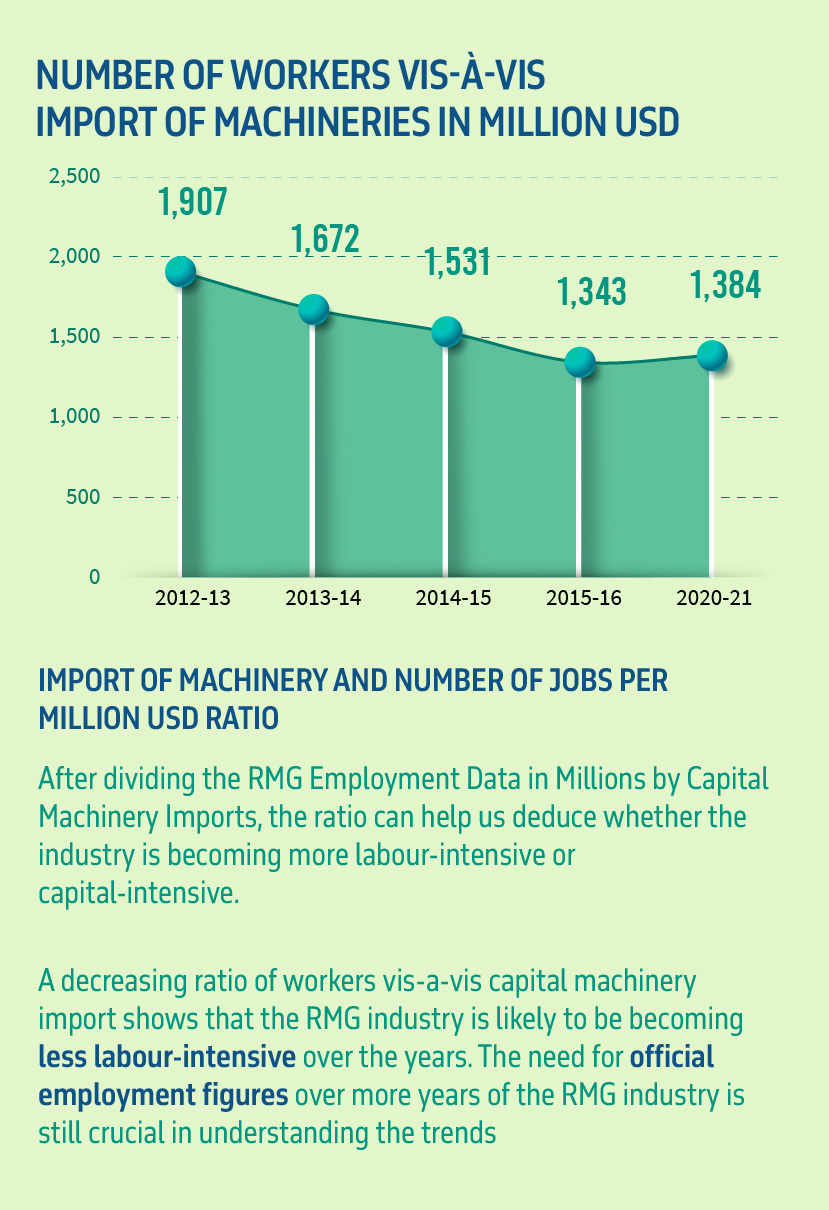

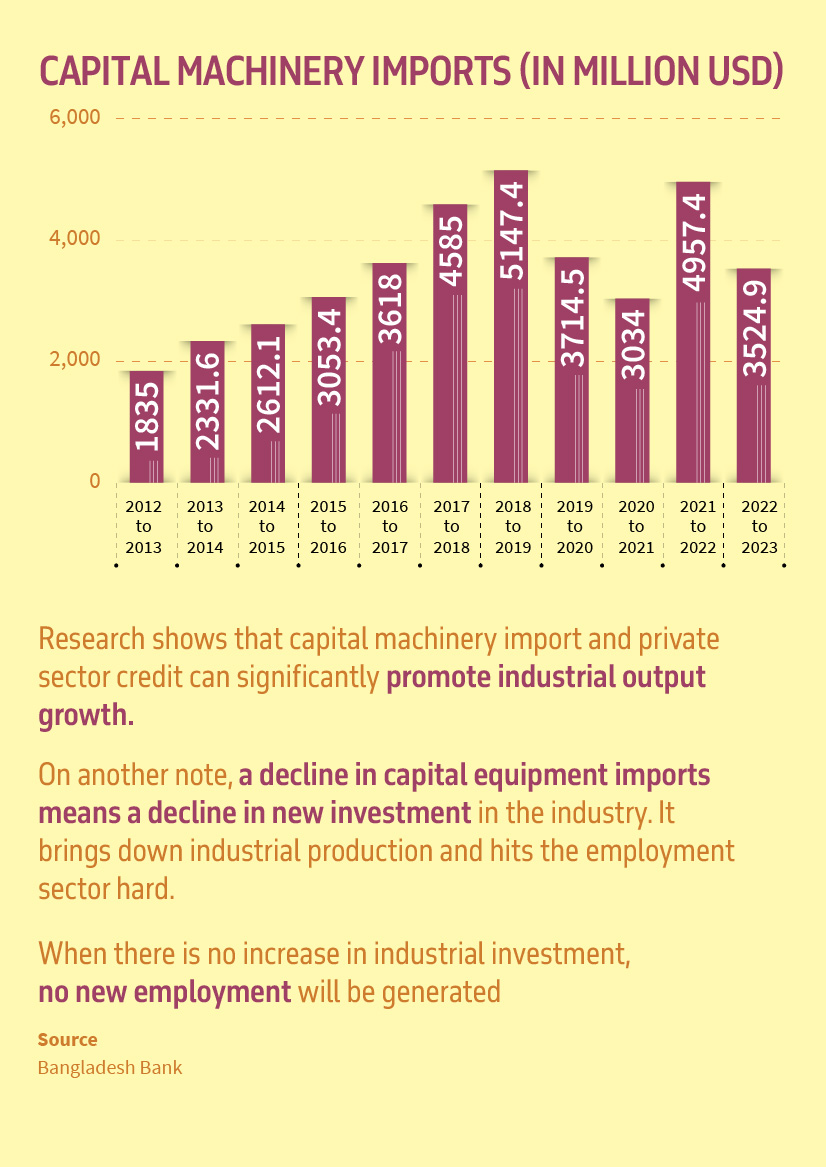
Sources: RMG Bangladesh, BGMEA, Bangladesh Bank, Prothom Alo, Hoque, Md. (2017). Capital Machinery Import and Industrial Output Growth in Bangladesh: A Co integration Analysis. XLII. 95-121., Rahman, Md & Habibullah, Md & Masum, Md. (2017). Readymade Garment Industry in Bangladesh: Growth, Contribution and Challenges. IOSR Journal of Economics and Finance. 08. 01-07. 10.9790/5933-0803010107.

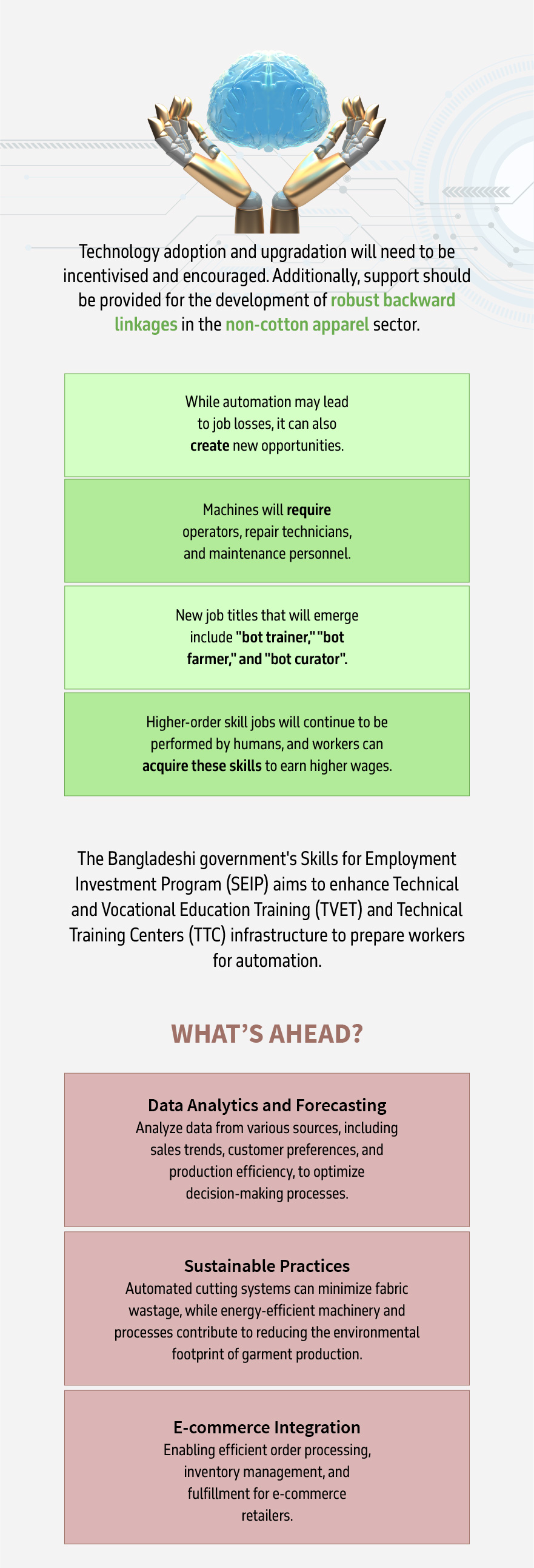
Sources: Centre for Policy Dialogue (CPD), Deloitte
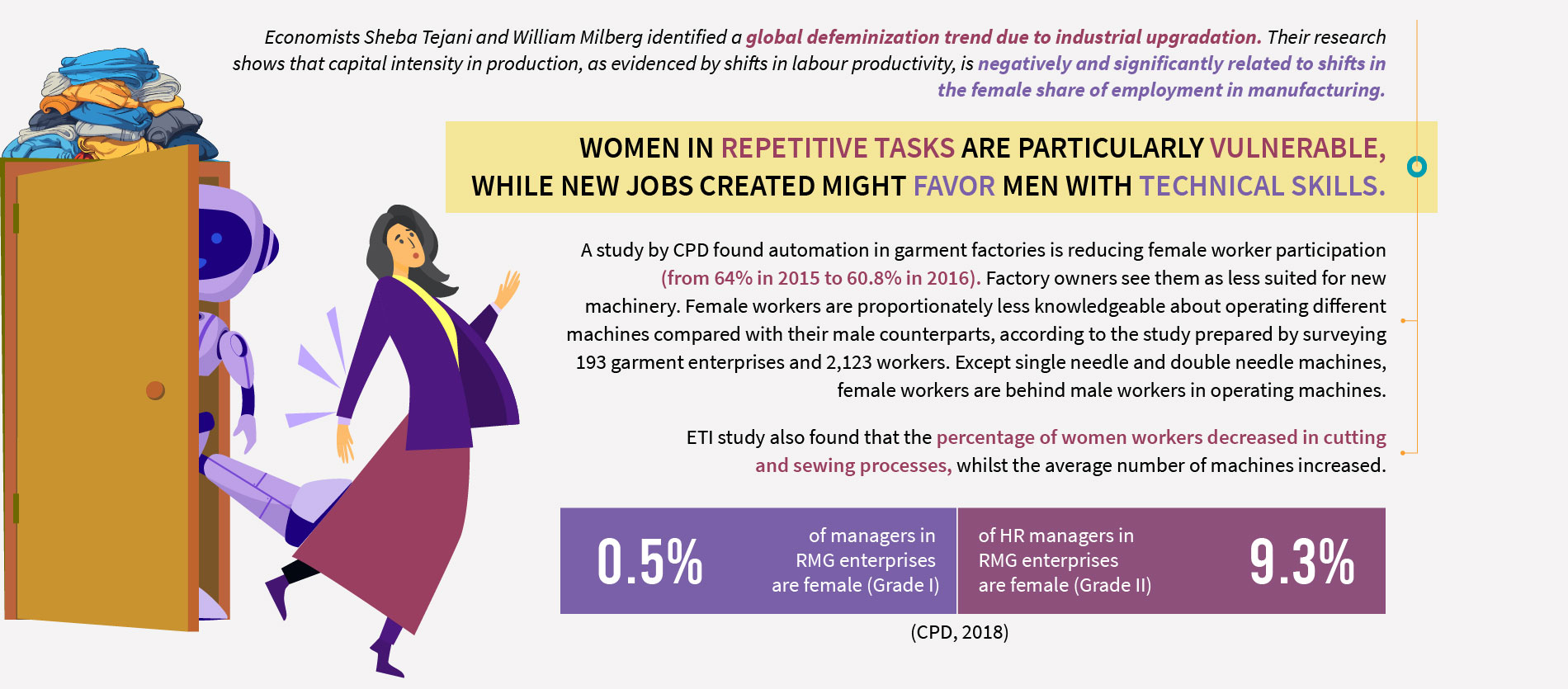
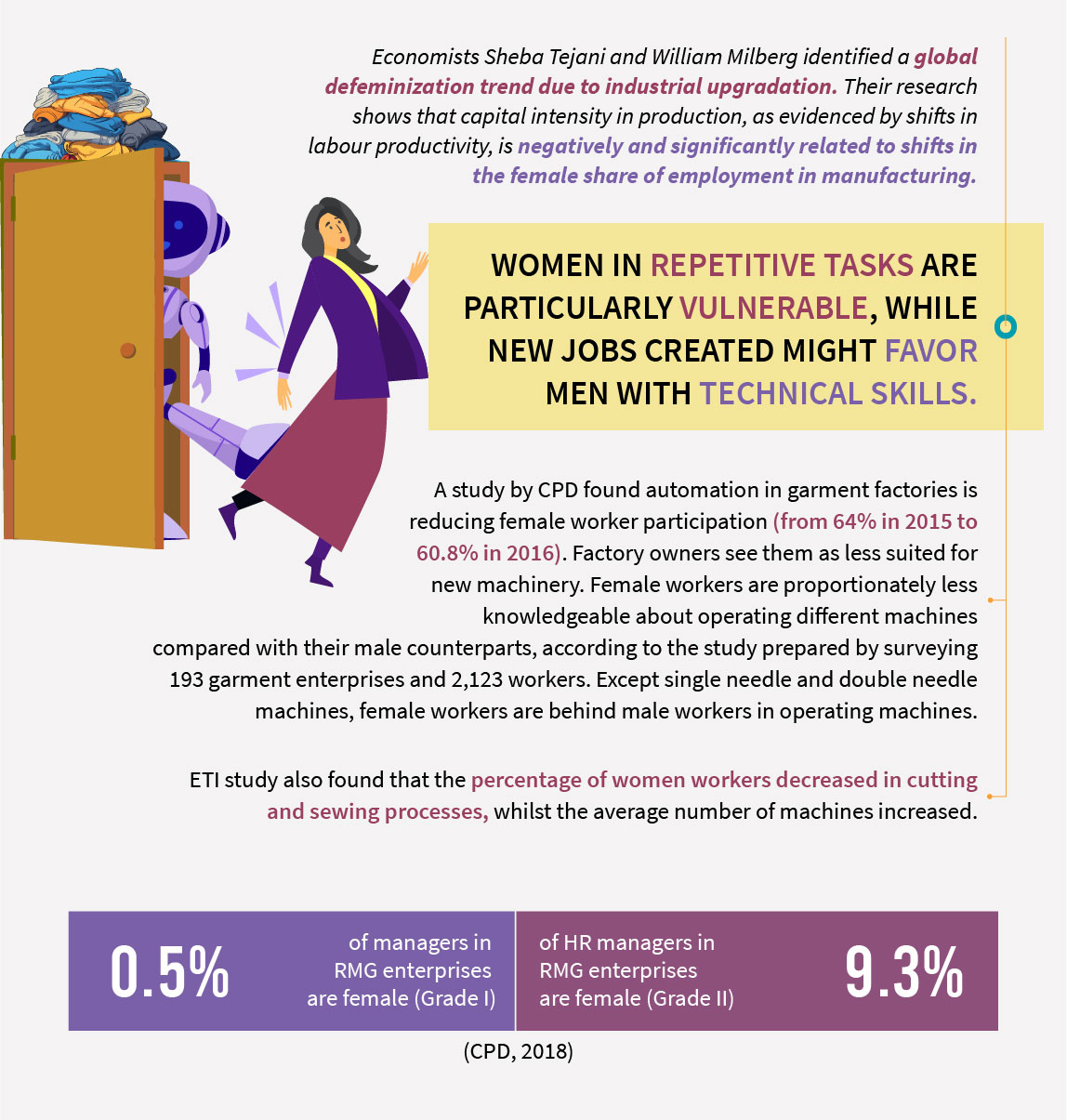
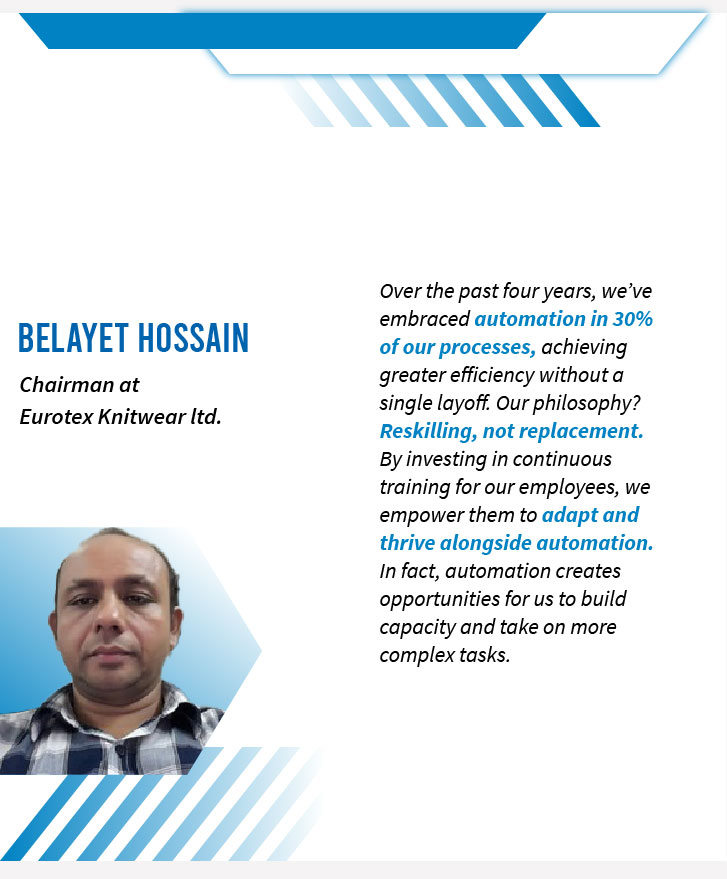

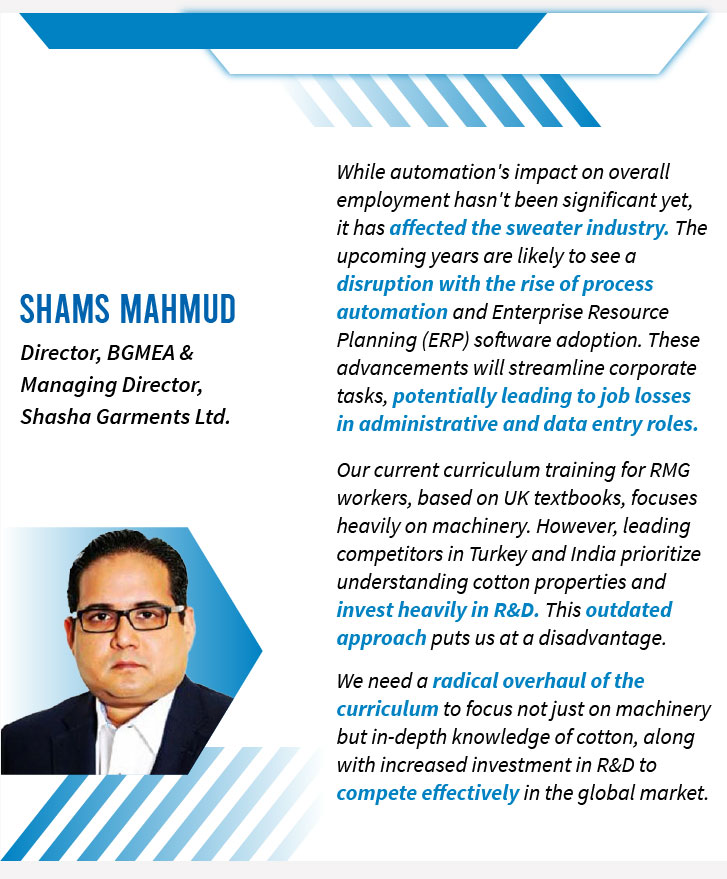

Industry embracing AI, ESG


Fatullah Apparels Limited, a knitwear factory with about 500 workers, located at Jalkuri in Narayanganj, outskirts of Dhaka, received platinum rating of LEED (Leadership in Energy and Environmental Design) certification, the world’s most widely used green building rating system under United States Green Building Council (USGBC) on September 7, 2022. The chief executive officer of the factory, Fazlee Shamim Ehsan, claimed that the factory is the highest rated (97 points out of 110) in terms of USGBC’s lead certified knitwear garment factory.
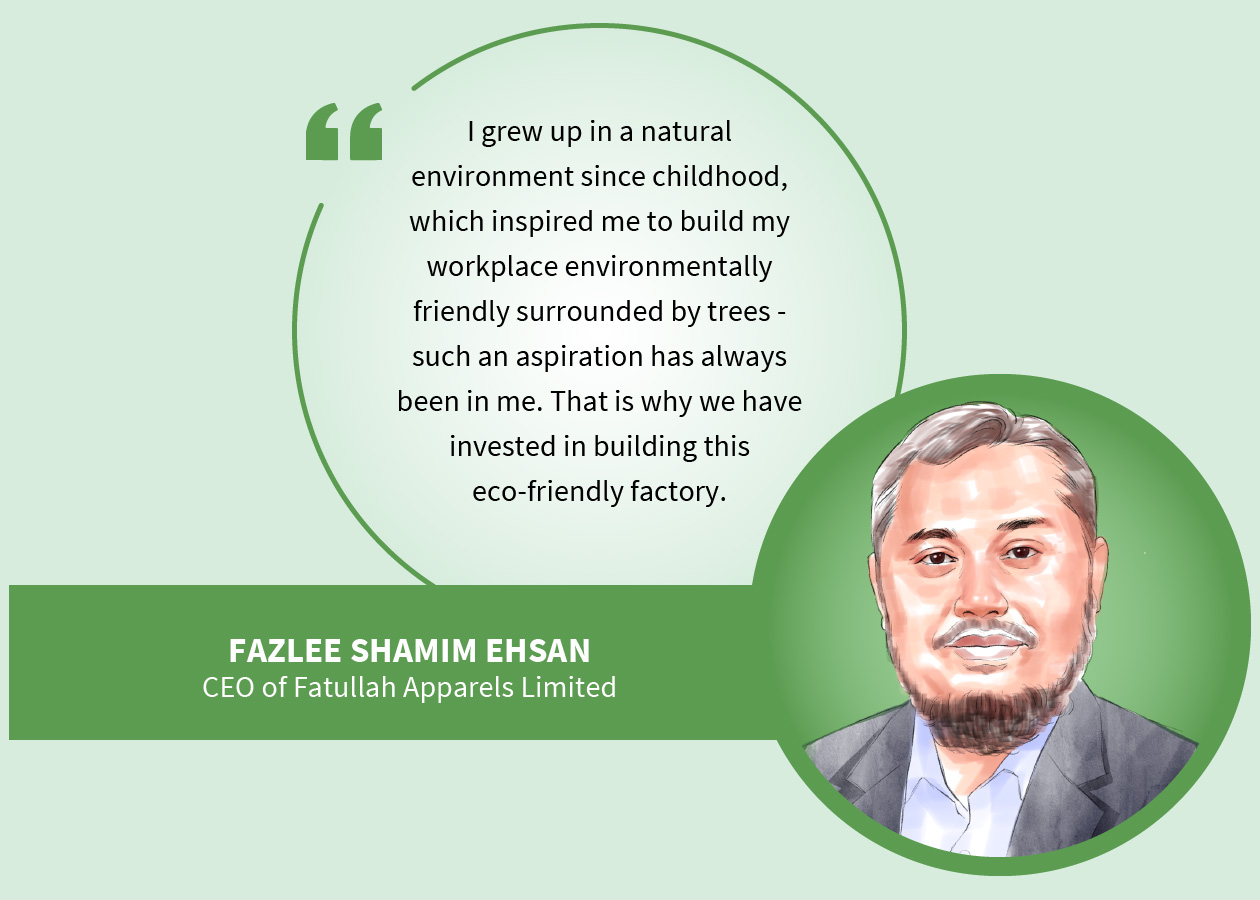

However, my factory does not really fulfill all the conditions of ESG. Environmental and social issues are reported in International Standards. We maintain the governance issue as per labour act, but it is not yet at the reporting stage.
In a normal factory where the temperature is higher than outside, this factory is at least two degrees cooler than the temperature outside in the shade.
Factory workers are happy. However, a section of workers wants to leave the factory to even another normal factory for better wages as they offer more overtime duty than us. We can’t offer more overtime duty more than 10 hours a week due to comply international standard.
I did not get anything special except ‘thanks’ from the buyers for setting up green factories by making big investments. My factory does not get extra price than other normal factories.


The Team Group, a leading apparel maker in the country, has managed to increase its production up to 12% with “Nidle” a smart factory solution for apparel manufacturing shop-floor operation.
Using IoT-based this smart solution, factories can track, optimise, and digitise their operations in a real-time dashboard, from any location, to enhance efficiency and quality, and reduce production waste.
The solution also developed by the team group’s sister concern, Intellier Ltd, the next-generation IT Solution Provider, brings “Smart Factory Solutions” using groundbreaking 4.0 IR technologies to address the challenge of the apparel industry.
Nidle offers cutting-edge technology solutions to integrate Man, Machine and Process towards improving productivity, quality, timeliness, transparency and control.
It measures the performance of every operation and the operator of a sewing line through the IoT devices attached to the machines. It makes real-time monitoring of production performance possible.
Through Nidle, target versus actual performance is visible to workers and managers. Real-time tracking of quality, rejection and re-works helps improve quality performance and wastage control.
The Team Group first piloted Nidle in its LEED Platinum-rated outerwear manufacturing unit 4A Yarn Dyeing Ltd in 2020. Nidle contributed to increasing the efficiency of 4A Yarn Dyeing Ltd by 10% to 12%. Subsequently, Team has also been implementing the solution among other apparel concerns of the group, said Abdullah Hil Rakib, managing director of Team Group.
Saeed Ahmed, COO at Inellier Ltd said Talking with out of the team group Chattogram based Yunusco group’s factory also installed the Nidle to improve their productivity and another three apparel factories are in the pipeline to procure this smart factory solution.
He further said every day, our team are working on developments including algorithms, AI and machine learning to get the best result.
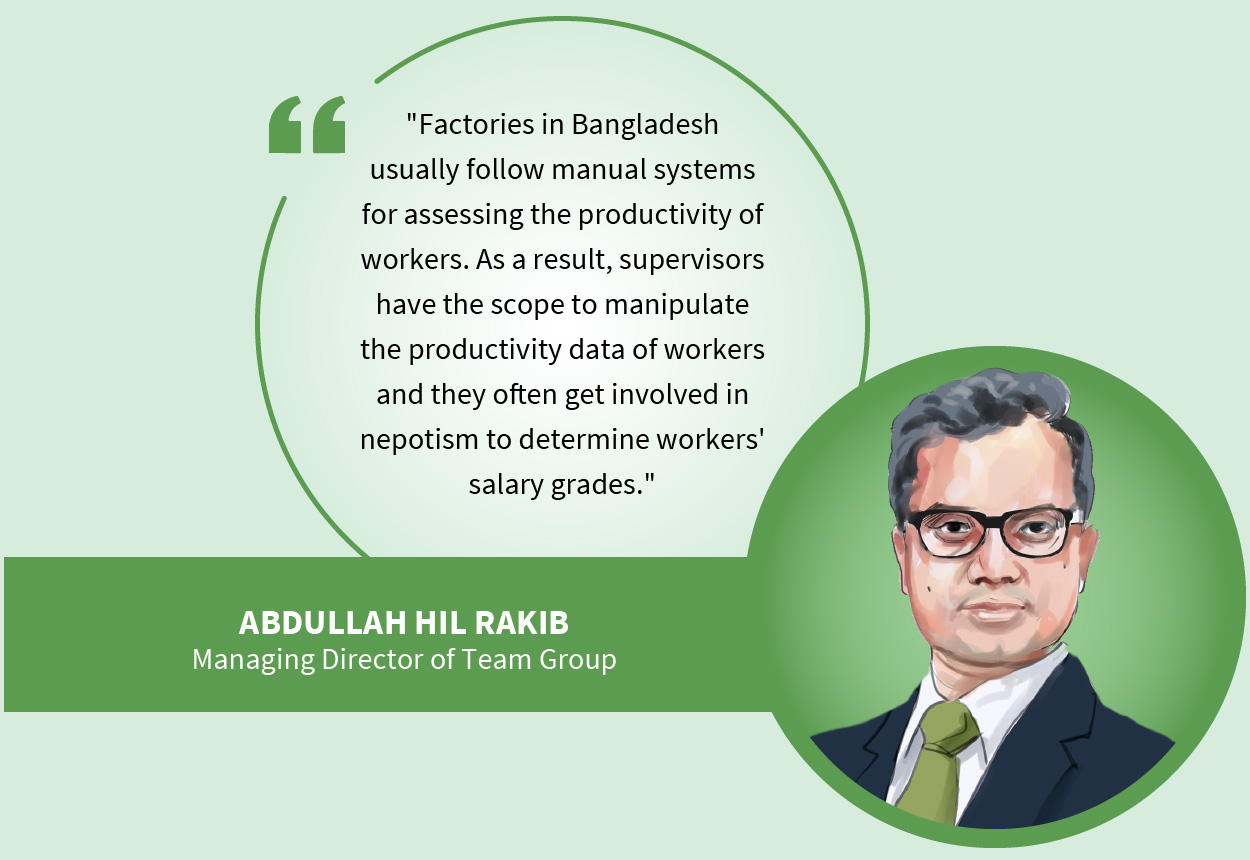

“Moreover, the manual data shared by supervisors does not provide any in-depth line-wise information, which is a major hurdle for a factory in achieving optimum production and quality targets on time,” he said.
By digitising the process, Nidle has solved the said problems while improving the productivity, efficiency and transparency of the apparel factories of the Team Group, said the managing director.
Production managers and industrial engineers strive to achieve line-wise productivity targets while maintaining quality and it becomes difficult for them to achieve the targets due to a lack of real-time information.
Aminul Islam, Production manager at 4A Yarn Dyeing Ltd said that this solution also helps them to reduce time wastage which also helps them to meet their lead time.
He further mentioned that quantifying the reduce of wastage vale is difficult as it depends on the value of products.
Aminul Islam said this solution has no effects on their employment number but it also secures their jobs and makes them skilled through identity their lacking and needs of trainings.
Why LDC Graduation in 2026 is
Different from MFA Phaseout in
2005 for RMG Sector



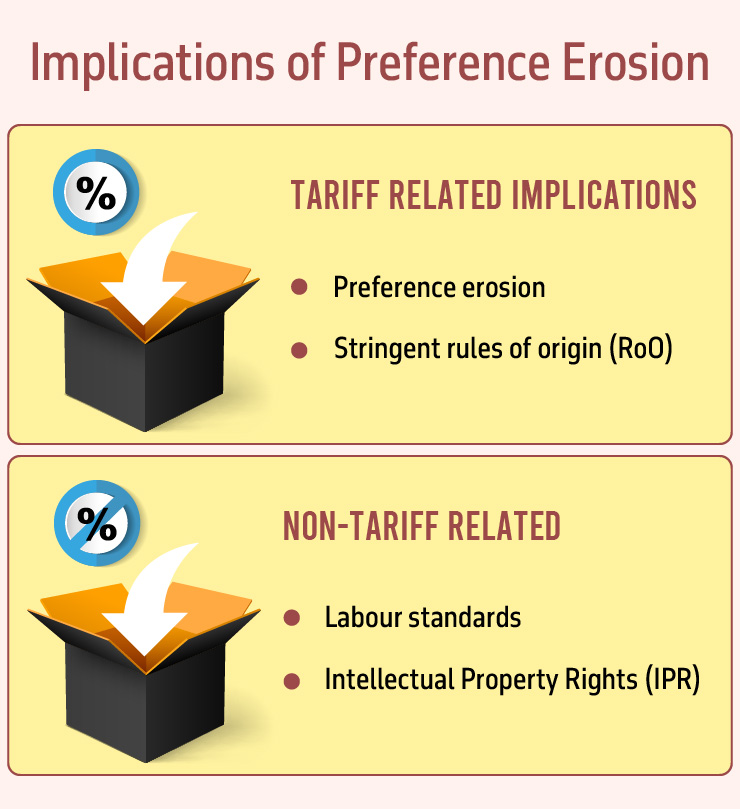
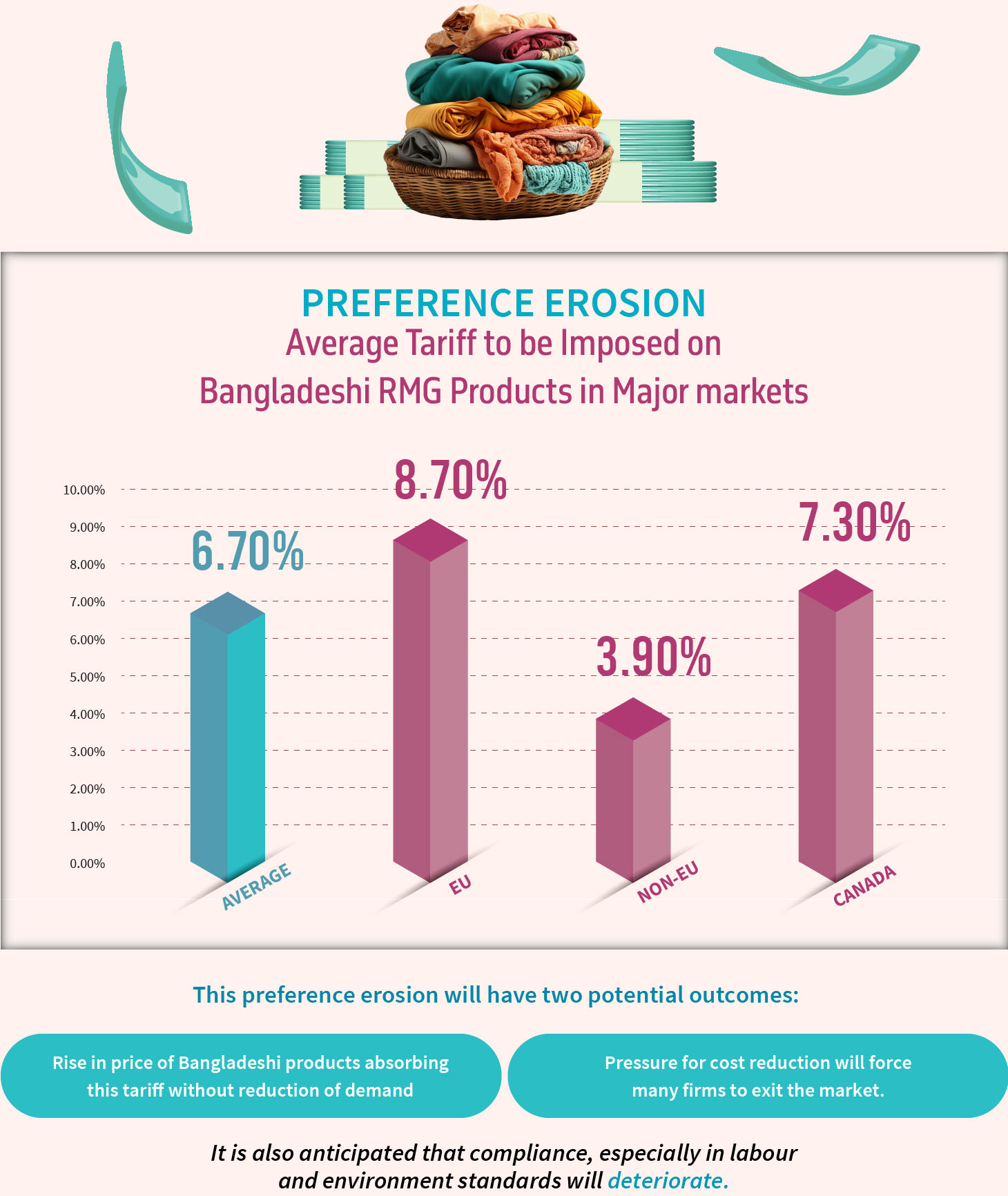
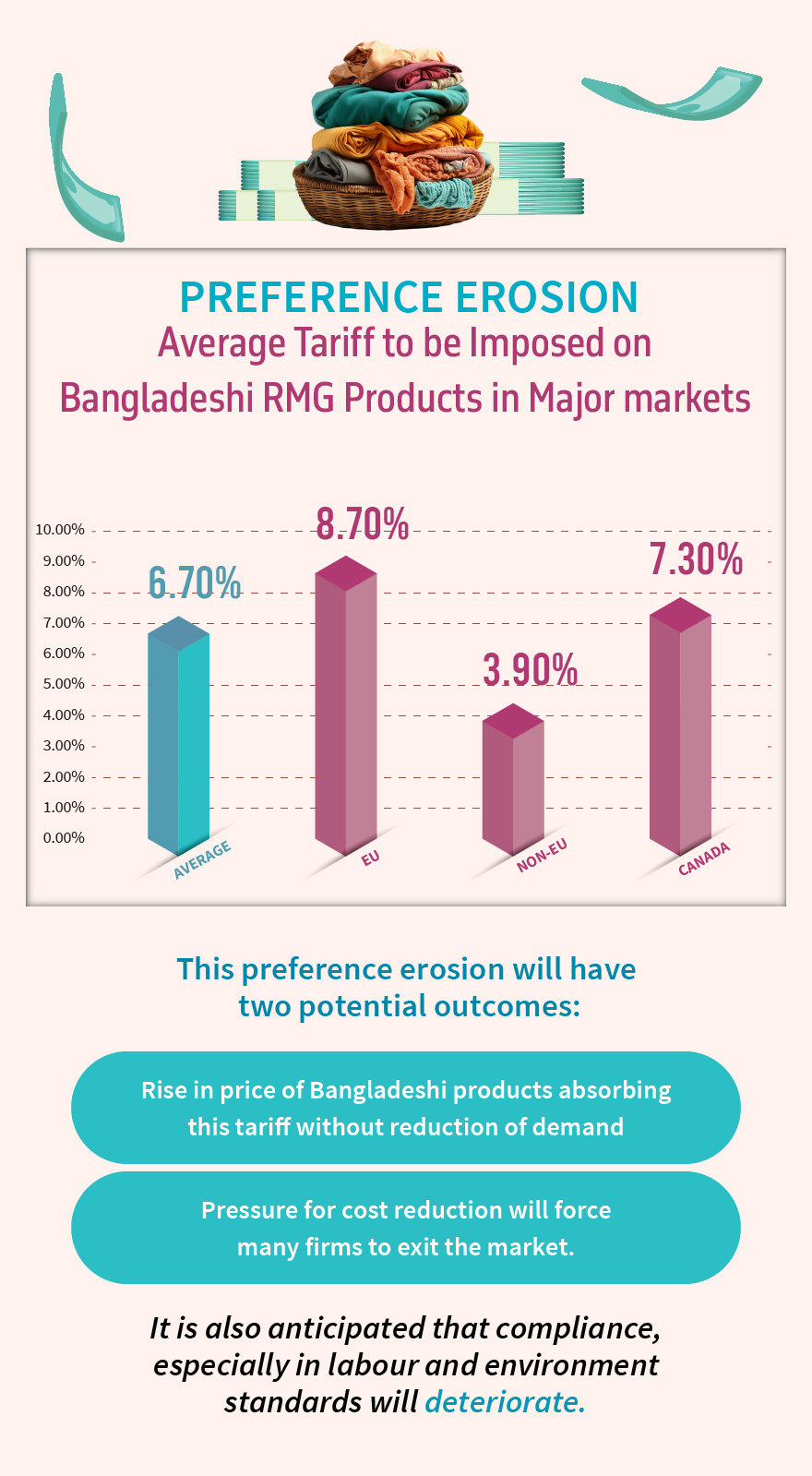
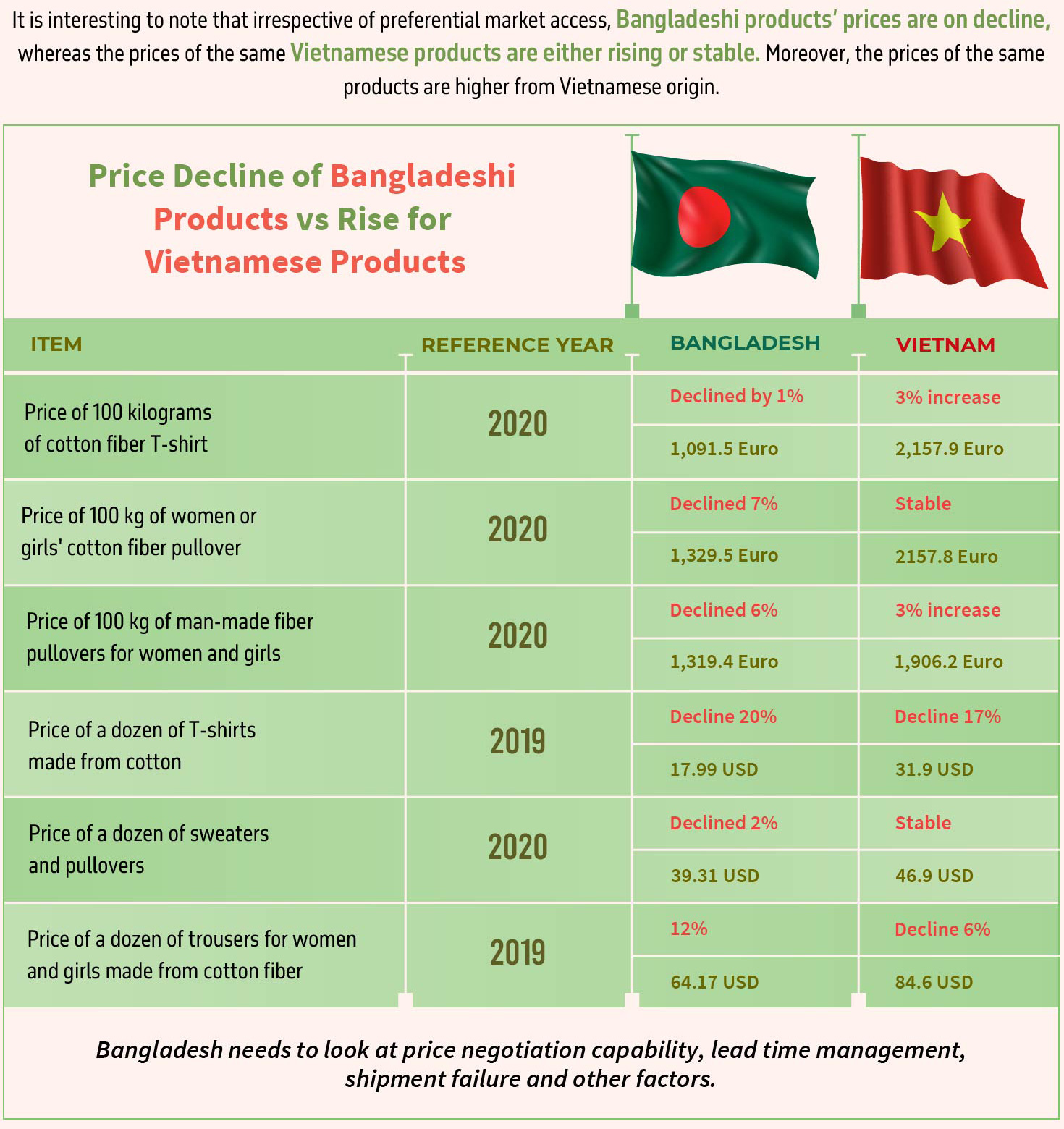
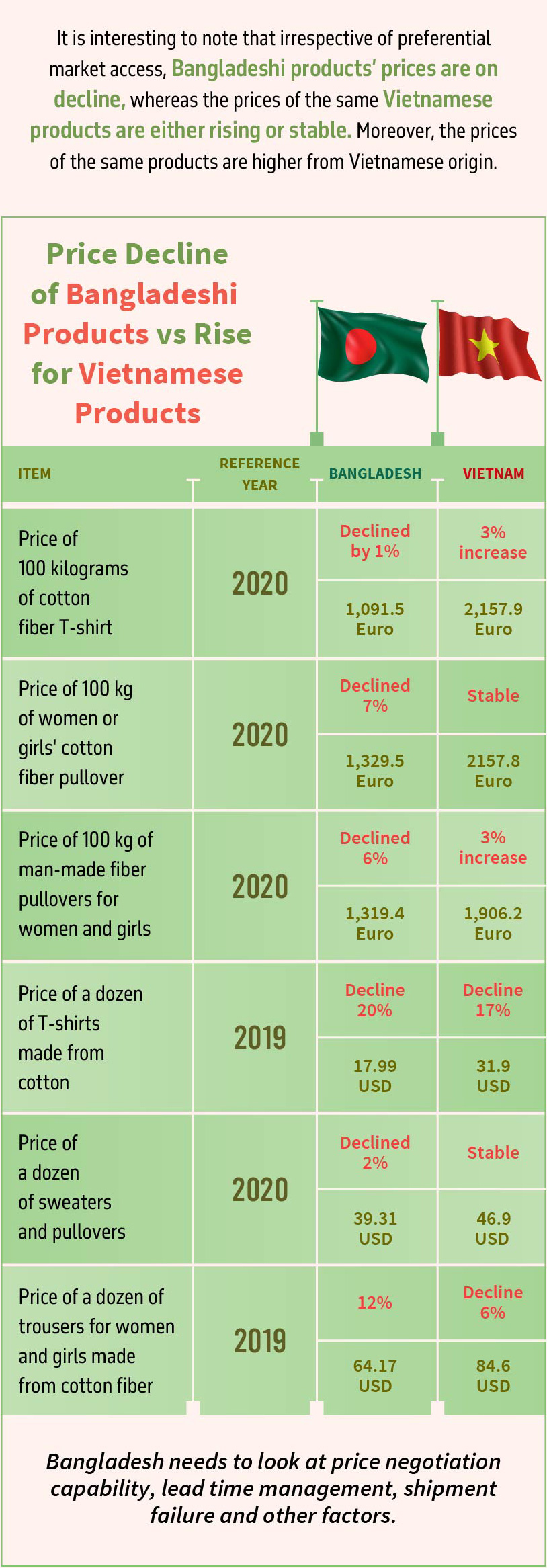


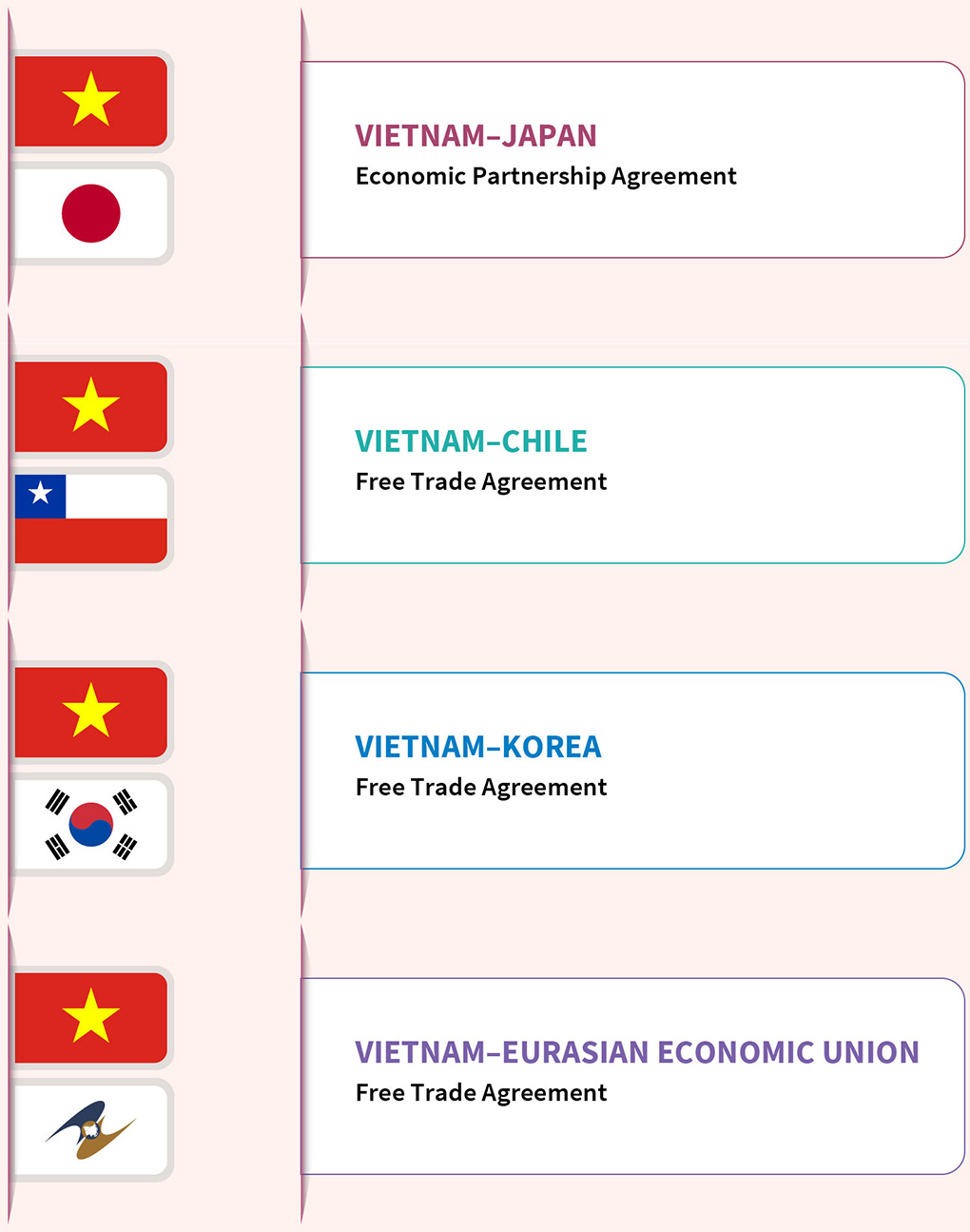

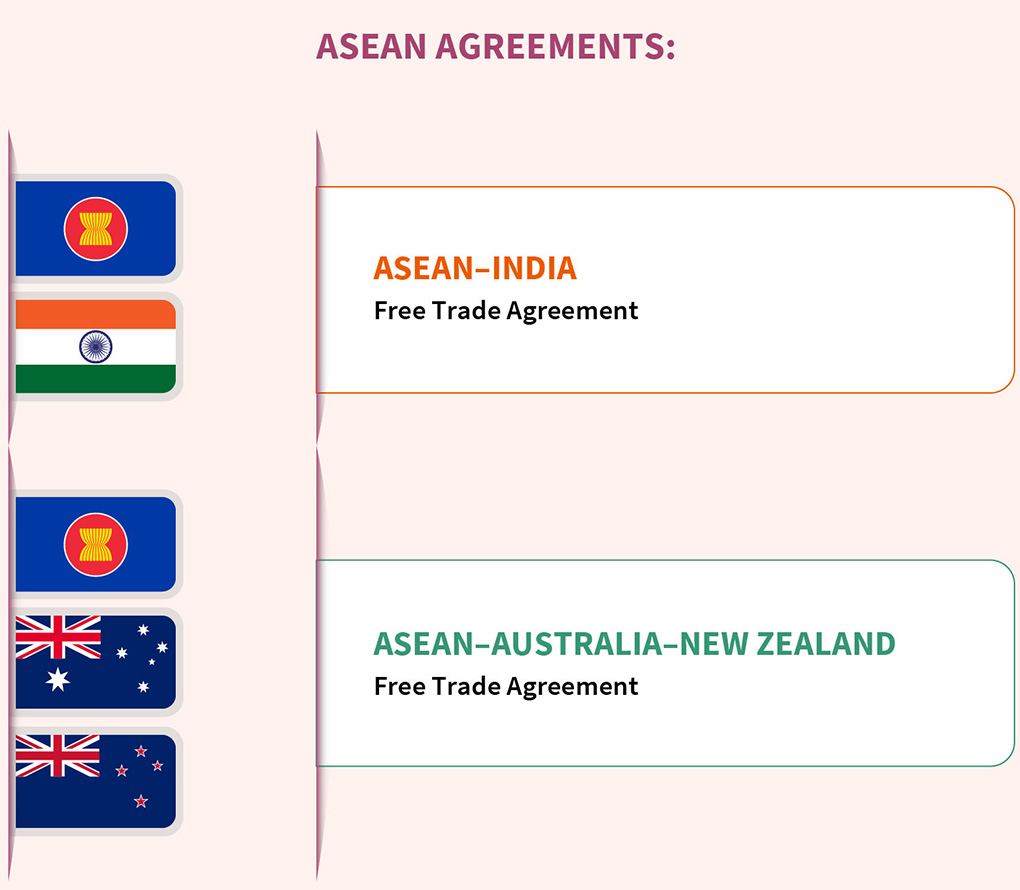

Bangladesh has a very limited number of bi-lateral, regional or multilateral market access.





